
your news, your views AUTUMN 2024 issue 90 INSIDE DMG FINE WINES RUM MAKERS INTERNATIONAL WOMEN’S DAY

OUR STARS YEARS IN THE MAKING WORLD CLASS SPARKLING WINE FOR MORE INFORMATION OR TO PLACE AN ORDER CONTACT DMG FINE WINE 1300 220 788 SALES@DMGFINEWINE.COM.AU HOUSEOFARRAS.COM.AU
CREDITS
PUBLISHER The Drinks Association
www.drinksassociation.com.au
All enquiries to:
The Drinks Association
Locked Bag 4100, Chatswood NSW 2067
ABN 26 001 376 423
The views expressed in Drinks Trade are those of the respective contributors and are not necessarily those of the magazine or The Drinks Association. Copyright is held by The Drinks Association and reproduction in whole or in part, without prior consent, is not permitted.
EDITORIAL
PUBLISHING EDITOR Ashley Pini ashley@hipmedia.com.au
ASSISTANT EDITOR Cody Profaca cody@hipmedia.com.au
DESIGN
SENIOR DESIGNER Jihee Park jihee@hipmedia.com.au
ADVERTISING
NATIONAL SALES MANAGER Jenny Park jenny@hipmedia.com.au
PRODUCTION MANAGER Sasha Falloon .........sasha@hipmedia.com.au
CONTRIBUTORS
Sarah Andrew, Jayne Lewis, Natalya Watson, Ken Gargett, Cody Profaca, IWSR, Sasha Falloon, Drinks Explorer.
With new year celebrations in the rearview mirror and Australia Day done and dusted, it feels like the year is well and truly underway. Easter is just around the corner. Welcome to autumn 2024 – we are a quarter of the way through (nearly) and we trust your trading was solid through the summer.
This is the season in which we’ve traditionally thrown the spotlight on the significant issues of ESG – Environment, Social and Governance. The world is changing, and while we don’t get to revise the past, we can shape the future and the past’s impact on it.
In this edition, we applaud the trailblazers in our industry who are breaking down barriers and pushing boundaries in areas such as diversity and sustainability. We shine a light on Australian Vintage’s B-Corp Certification on page 58 and on the vision of William Dong at DMG Fine Wines in their journey to sustainable and organic winemaking practices on page 18.
As this magazine goes to print, we prepare for the celebrations around International Women’s Day on March 7. In this edition we have interviewed and highlighted some shining lights showing the way by bringing world-class education programs to Australia. We invite you to read about Sarah Andrew, Jayne Lewis and Natalya Watson, three women championing the WSET’s new awards in beer on page 22.

this continues to gather pace, innovation becomes more and more important to keeping consumers in your shop, your brand, or your segment. In this edition we have a look at the Ready to Drink category, its sub-categories and at what might be next. We spotlight Suntory’s Minus 196 brand on page 28 followed by our feature on page 33.
Produced and contract published by:
ACCOUNTS: accounts@hipmedia.com.au
For new product or current releases in Drinks Trade magazine send a sample to:
HIP Media
20 Gillian Parade, West Pymble, NSW 2073 www.hipmedia.com.au | facebook.com/drinksmedia
ABN: 42 126 291 914
On the other side of the planet, the world’s first female master blender, Joy Spence of Appleton Estate, has been blazing her own trail since 1997 when she took over from Owen Tulloch. Spence was destined to excel – her final marks in her Masters of Science in Analytical Chemistry were (and still are) the highest ever achieved at Loughborough University. In 2017, Spence was awarded the Order of Distinction in the Rank of Commander (CD) for her work in the Jamaican rum industry. You can read her story on page 48, and more about the process of making rum on page 52.
It's no secret that consumers are reducing consumption and looking for health and well-being options, whether that is a foray into the non-alcoholic space, lower calories or simply a move away from sugar. As
Covering more ground and crossing over into Mexico, our look at Celebrity Agave is on page 64. This battle ground promises to heat up over the winter as Hollywood stars promote their Tequilas to an adoring public. Expect to see some Instagram posts from Mark Wahlberg and Dwayne ‘The Rock’ Johnson as they unleash their respective brands on the Australian market.
I hope you enjoy our autumn edition for 2024, shining a light on members of our industry working hard to ensure our future is bright.
To borrow, and adapt, a Greek proverb “A society grows when women plant trees in whose shade they may never sit.”

Ash ashley@hipmedia.com.au @exploredrinks
Editor’s Note drinks trade 3









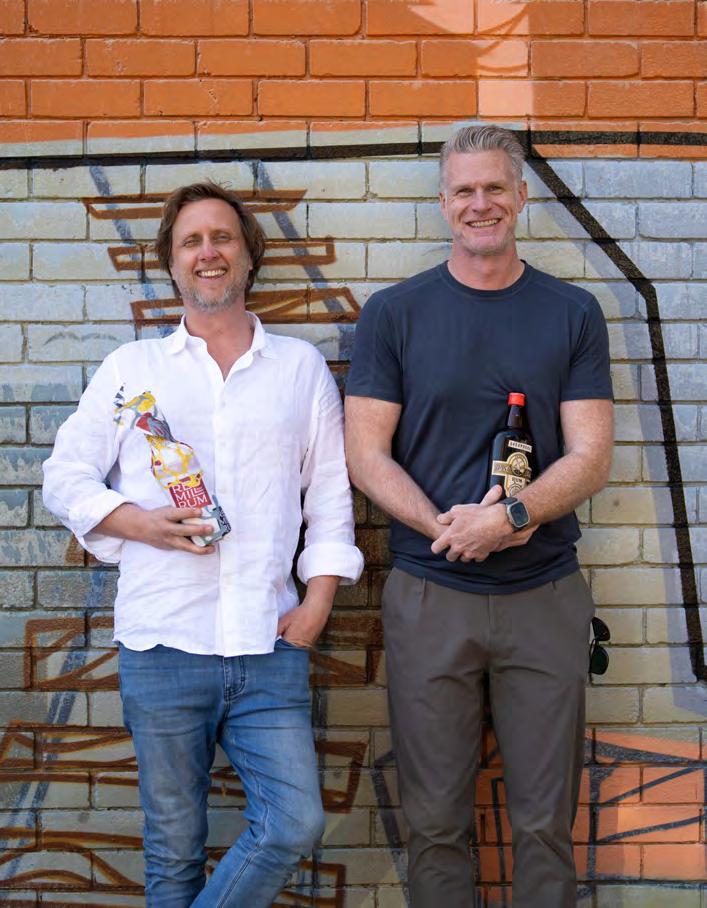
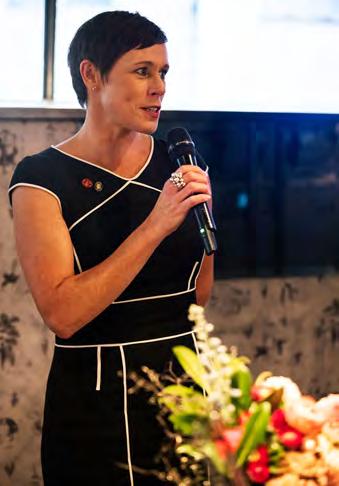
56 18 9 22 Contents NEWS 9 Latest industry news INTERVIEWS 18 William Dong, CEO DMG Fine Wines 20 Peter Dillon, Chief Winemaker Handpicked Wines 21 Ed Carr, Chief Winemaker Arras 56 David Fesq, Red Mill Rum INTERNATIONAL WOMEN’S DAY 22 Sarah Andrew, WSET HEAD APP Development – APAC 24 Jayne Lewis, WSET Business Development Manager Beer –APAC 25 Natalya Watson, Business Development Manager, WSET drinks trade 5
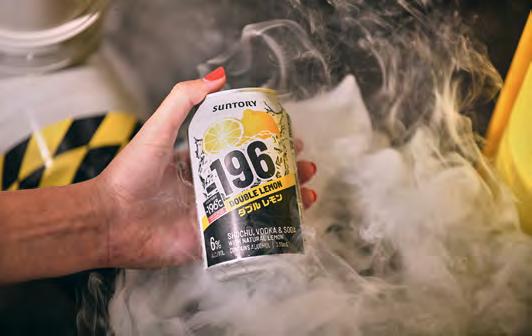
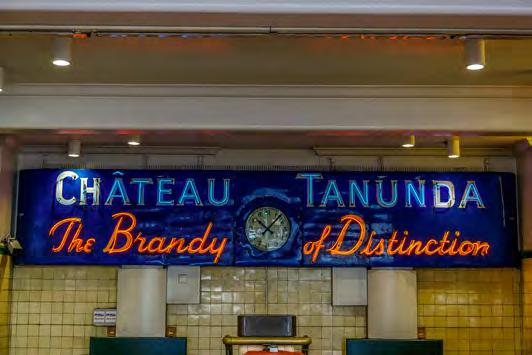


64 58 46 28 38 FEATURES 28 Ready To Drink - Suntory Minus 196 33 RTD Marketplace 38 Cognac & Brandy 52 Rum 64 Celebrity Agave SPOTLIGHT 44 EzTenda Launches in Australia 46 Appleton Estate in Focus 51 Australian Liquor Marketers (ALM) 56 New Distillery - Red Mill Rum RECRUITMENT 50 Core Element SUSTAINABILITY 58 Australian Vintage celebrates B- Corp Certification NEW RELEASES 60 Latest innovation and product launches COCKTAILS 66 The Last Drop - Jamaican Mule Contents
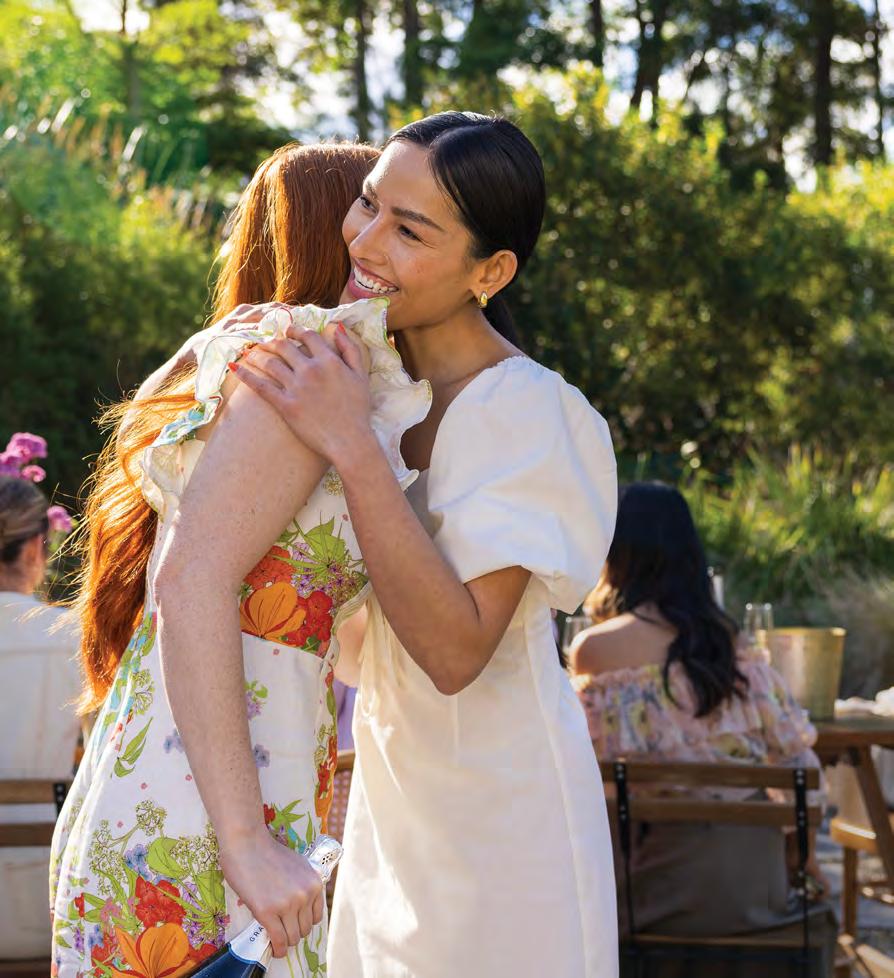




NEWS
INDUSTRY PUSHES BACK AGAINST TAX EXCISE HIKES
Both the Australian Distillers Association (ADA) and the Independent Brewers Association (IBA) have made public pleas to the Federal government requesting changes to current liquor tax policy.
Bruised Spirits
Currently, Australian spirits manufacturers are faced with the third highest spirit taxation rates in the world. As a result, a chasm has formed between the pricing of spirits and other alcohol categories.
“Without intervention, the current alcohol tax system is increasingly discriminating against Australians who enjoy whisky, gin, vodka and other spirits,” said Australian Distillers Association (ADA) chief executive Paul McLeay.
“Our industry contributes $15.5 billion in added value to the Australian economy, supporting 5,700 spirits manufacturing jobs and a further 45,400 jobs in spirits wholesale, retail and hospitality.”
Following the latest Spirits Tax increase, distilleries are required to pay $101.85 per litre to the ATO.
“There are more than 600 spirits manufacturers affected by this archaic policy,” said McLeay.
“The Federal Government must act now to safeguard our industry’s future by temporarily freezing this unfair and damaging tax.”


Craft beer’s crisis
In related news, Australia’s independent brewing industry is undergoing an epidemic of breweries being forced into administration. Despite first becoming apparent in January 2023 with the fall of Queensland’s Ballistic Beer Co, the problem has been steadily gathering momentum over past months with Wayward, Hawkers and Big Shed all following suit.
“The thing that they have in common, all of them, was an outstanding ATO debt,” said IBA CEO Kylie Lethbridge.
“What we’re not able to come to a conclusion on or have any evidence to support is why the ATO is being flexible for some breweries and extending payment terms and not others.”
“And then of course, the second [reason]: the first excise hike for the year on the 5th of February was the catalyst for a number of breweries that were already doing it tough.”
The Independent Brewers Association (IBA) has put forth six proposals to the Federal Government that aim to provide greater support to the 600+ independent breweries in Australia.
Unfortunately, Lethbridge is not overly optimistic about the coming year ahead.
“Unless we get some relief from the federal government then we will see more businesses close and we will see more voluntary administrations and we will see more redundancies.
“We are the tiniest part of the Australian [beer] market but we employ over 51% of the industry because we’re quite labour intensive, and so the more breweries that close or restructure downward, the more jobs that are going to be lost in this country.
“If we don’t get a little help, you’ll definitely see more of that pain.”
APPOINTMENTS AND ACQUISITIONS
Coles acquires Tasmanian bottle shop chain
Coles Liquor Group has acquired 20 9/11 bottle-shops in Tasmania. The purchase of the stores from Federal Group presents a significant growth opportunity for Coles
News
drinks trade 9
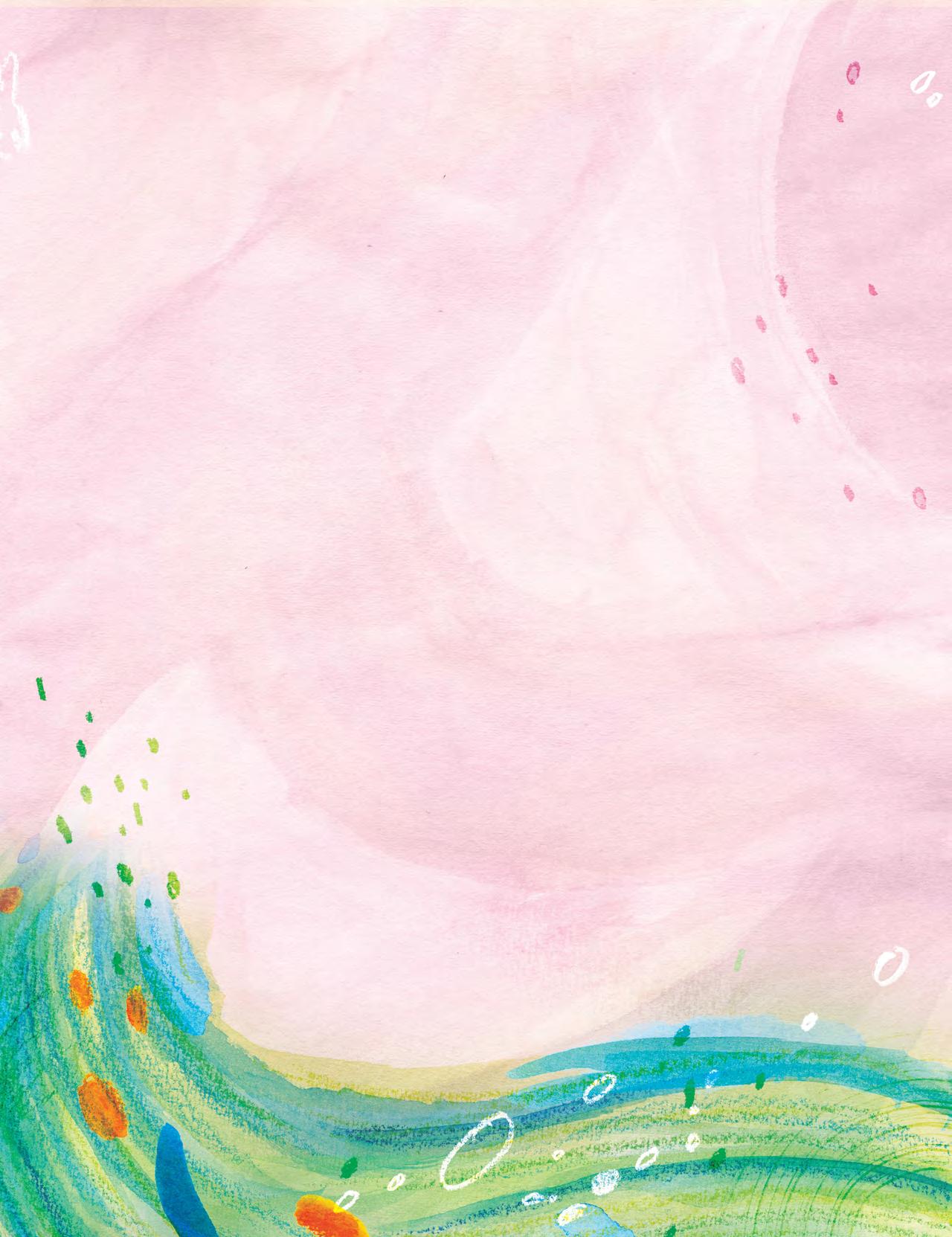


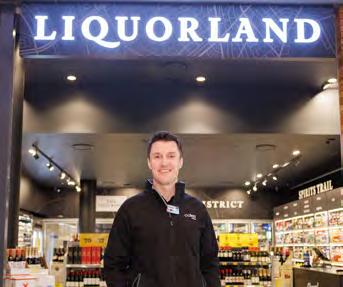
Group who previously only had two Liquorland stores on the island state.
“We’re looking forward to continuing on the great 9/11 legacy by supporting local suppliers and the community and providing great value and excellent service,” said Michael Courtney, Coles Liquor Chief Executive.
As part of the acquisition, all 9/11 employees will be offered employment with Coles Liquor on terms equal to, or better than, what they currently hold.
“We’re excited to welcome all 9/11 employees to the Coles Liquor team and thank Federal Group for working with us to ensure a smooth transition for customers and team members,” said Courtney.
Prior to finalisation, the transaction will be subject to legal and regulatory approvals, which are expected to be completed in the first half of this year.
Four Pillars’ new global team following recent global success
Four Pillars is heading into 2024 with an elevated international focus following the appointment of three new international leads: Karan Tuli as Head of Asia, Ellie Nash as Head of EMEA, and Jen Bailey as Head of the Americas.
The international leads will primarily be responsible for cementing the brand’s status in global markets and in broadening its presence on new shores.
“I look forward to building on the momentum of 2023. After winning at the IWSC awards, we were named 2024 Gin of the Year by the Whisky Exchange,” said Ellie Nash.
The winning gin, the Four Pillars Rare


Dry, was the first Australian gin to take home the top prize at the prestigious awards ceremony. The timing of the award served as the perfect 10-year anniversary gift for Four Pillars.
“This year I’ll be heavily focused on widening our distribution in Western Europe, and I’m eager to take our amazing gin to new consumers across the continent,” said Nash.
The global expansion also comes shortly after Lion Brewery assumed 100% ownership of Four Pillars in July of last year.
The expansion will also likely be aided by Cameron Mackenzie’s recent induction into Gin Magazine’s Hall of Fame, becoming only the second Australian and 20th person in history to do so.
David Dearie steps down as Lark Distilling Chair
David Dearie has stepped down from his role as Chair at Lark Distilling Co. and was replaced by current Non-executive Director
Domenic Panaccio. Dearie has now transition into the Non-Executive Director role vacated by Panaccio.
“It has been a privilege to serve as the Chair of Lark since 2019,” he said.
“Whilst we have had success in growing the Lark brand domestically and the whisky bank, the Board and the Lark Team are now focussed on our next chapter of growing the brand and distribution of Lark internationally.
Dearie’s successor, Domenic Panaccio, joined the Board in March 2022 following 30+ years of experience in real estate and consumer product industries in large public companies such as Fosters Group and Westfield.
“I am honoured to be elected to succeed David as Chair,” said Panaccio.
“I am committed to the creation of longterm value for all our stakeholders and look forward to working with my fellow Directors and management to achieve this.”
The change was announced concurrently with the release of Lark’s ASX December 2023 Quarterly Activities Report & 4C Market Update, which detailed a $1.1 million decrease in Net Sales revenue driven by lower domestic limited release sales and reduced exports.
Despite this, Lark’s Signature range displayed a significant 24% net sales growth in the quarter, aided by the additions of Lark Tasmanian Peated and Lark Rebellion to the collection.
News drinks trade 11
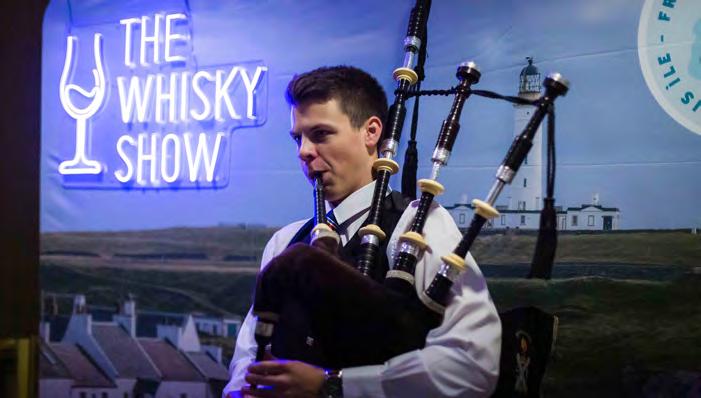
The Whisky List acquires The Whisky Show
The Whisky List, Australia’s largest online whisky retailer, has acquired leading whisky event company The Whisky Show, a strategic acquisition that will help it to connect with its consumer base on a more intimate level. The move comes at a time of growing demand for premium in-person whisky experiences.
“The Whisky Show is thrilled to welcome David and The Whisky Show to our growing family of brands and experiences,” said Oliver Maruda, Co-Founder of The Whisky List.
The Whisky Show will continue to function as a standalone brand under the new ownership. To accommodate this, The Whisky Show co-founder David Ligoff will join The Whisky List full time as its Director of Experiences & Events.
“David has over 20 years of experience working in the liquor industry, with diverse experience including launching Australia’s first dedicated whisky retailer, World of Whisky, and running dozens of festivals and thousands of whisky tastings” said Maruda.
The Whisky Show currently has nine events scheduled nationwide in its 2024 calendar.
SCIENCE & DATA
Australia’s wine industry expected to shrink
The most recent report from Australia’s
Agricultural and Resource Economics Bureau ABARES predicts that, by the 202728 harvest, domestic winegrape production will have fallen to 1.2 million tonnes, down from a peak of over 2 million in 2021.
ABARES has attributed this to a number of factors including the consistently low prices of red grapes, the global oversupply, and the above-average reduced rainfall years predicted over the period.
IWSR data also reports the perceived inaccessibility of wine as a significant contributing factor to the decreasing number of regular wine drinkers in Australia aged 34 years and under. This reflects global trends with a recent ProWein survey finding that 62% of wine producers and 57% of traders believe wine must be made easier to understand if it wants to reach new consumers.
The same survey found that 73% of producers believed that wine supply has exceeded demand. Despite this, the question of how the industry should proceed remains elusive.
Riverland wine region first to fall victim to growing pressures
On Wednesday, grape growers from South Australia’s Riverland region convened to discuss the now urgent need for short-term financial assistance. More than 175 people attended the meeting, which was organised by Riverland Wine in response to a state government request for a list of grape growers in need of assistance.
“Our growers need immediate crisis support,” said Lyndall Rowe, Executive Officer at Riverland Wine.
“We will be putting their suggestions to our local councils, the State Government and the Federal Government, and we are hoping our industry partners will support our calls to help save the nation’s largest grape growing region.”
The meeting comes at a time when wineries have been offering grape growers rates as low as $120 per tonne, less than half the cost of production. $120 per tonne is comparable to the region’s standard rate in the 1970s.
“The situation is desperate and there were some growers last night saying it was difficult putting food on the table, let alone pick grapes and try and sell them for a price which will cost them money, not earn them a cent,” said Rowe.
“It was clear they need support, while medium and longer-term strategies to raise the region’s profile, allow for succession planning and to reach new markets are helpful, they need immediate help.”
Wine Australia export data reflects challenging global trends
Wine Australia’s Export Report brought to light a significant decrease in both the value and volume of Australian wine exports in 2023, reflecting global trends. The data shows that exports decreased 2% in value to $1.9 billion, and 3% in volume to 607 million litres.
“The decline in exports to Europe and North America has resulted in their share of export value dropping to 29% and 27% respectively. Meanwhile, Asia’s share of export value has grown to 37%,” said Peter Bailey, Wine Australia Manager – Market Insights.

News 12 drinks trade

Positive takeaways from the report include the first increase in volume of wine exported to the UK since mid-2021. The report also establishes Hong Kong as a promising new market, increasing in value by 74%. The Hong Kong Market is now the third most significant export market by value, responsible for 15% of Australian wine’s total export value.
Australia’s RTD category reports significant growth
Australia’s RTD category has continued to grow over recent years, showing a propensity for self-reinvention that has helped it to capitalise on various consumer trends.
Currently the world’s third-largest RTD market, Australia’s RTD category now composes 13% of total liquor sales in Australia, growing at a CAGR of 7% between 2018 and 2022, reports IWSR’s latest research.
The IWSR report identified two somewhat contradictory groups of trends driving category growth in Australia. Whilst the first includes characteristics such as lowcalorie, high-ABV, and light-and-refreshing, the second includes brightly-coloured, very sweet, and low-ABV.
“The RTD category is dominated by dark spirit-based drinks that have come under pressure in the face of moderation trends. This has led to the launch of more zero-sugar and soda-based variants, keeping interest in the category alive,” said Sarah Campbell, APAC Head of Research, IWSR.
Perhaps the most important conversation happening in Australia’s RTD space at the moment, however, is in regards to pricing. On a price-per-serve basis, RTDs are considerably more expensive than other alcohol categories. This is largely due to the fact that spirit-based RTDs, which dominate the sector, face the same liquor tax excise as the spirits category.
“As excise rates continue to escalate (two increases at 3.7% and 2.2% in 2023, in line with CPI), there is the risk that the headline price of RTDs could become too high for some shoppers, forcing them to trade down within RTDs, or into other categories with a lower price per serve,” said Campbell.
Roy Morgan’s latest Alcohol Consumption Report supported the IWSR findings, registering that RTD consumption increased from 2,138,000 Australians (10.8%) pre-pandemic to 4,319,000 (21%) in late 2023.
NSW Liquor Licensing reforms proven effective
A BOCSAR report has found that the various liquor licensing reforms implemented in NSW since 2008 led ot a significant 19% statewide decline in non-domestic assaults when compared to estimated noreform levels. The reforms had an even higher impact when isolating the Sydney region, which experienced a 45% reduction in non-domestic assaults, with Kings Cross decreasing by 84%.

BUSINESS & ECONOMICS
TWE optimistic despite reporting decrease in profits
Treasury Wine Estate’s F24 Half Year Results revealed a 5.8% decrease in profits. This brings its total earnings before interest and taxes (EBITS) to $289.8 million.
The decrease occurred mostly in TWE Treasury Americas and Treasury Premium Brands, which featured a 17.5% and 3.2% decline in EBITS respectively. These decreases were offset by Penfolds’ 2.9% increase to a total of $186.9 million EBITS following a strong performance in Australia and Asia.
Tim Ford, TWE’s CEO, said that the results were in line with expectations.
“I am pleased with the ongoing underlying performance of Treasury Wine Estates this period, with strong consumer demand for our priority Luxury brand portfolio continuing around the globe.
“Penfolds continues to perform and strengthen, whilst Treasury Americas has made significant progress in reshaping its portfolio focus.”
The report concludes that restrictions on late night and on the 24-hour trading of licensed premises (such as the Lockout laws) and enforcement specifically targeting more high-risk venues (such as the Three Strikes Scheme) were the two policies that most contributed to the decline.
TWE has also indicated that it is well positioned for the anticipated removal of the tariffs currently in place on Australian wine in China. Should the tariffs be lifted, TWE plans to re-establish its Australian country-of-origin portfolio in the Chinese market, including wines such as Penfolds Max’s, Koonunga Hill, and One. It will also reallocate a portion of Penfolds Bin and Icon tiers from other global markets

drinks trade 13
and implement careful price increases to accommodate the anticipated changes to global demand.
“The business is on-track to deliver midhigh single digit earnings growth in F24,” said Tim Ford.
“We remain confident that our premiumisation strategy, preeminent brand portfolio and attractive market fundamentals at luxury price points will allow us to continue to deliver our long-term growth ambitions,” said Tim Ford.

AWL to take equity ownership of Accolade Wines
Following a period of acute operating and financial conditions, Accolade Wines has reached an agreement with Australian Wine Holdco Limited (“AWL”) on a recapitalisation plan that aims to improve the financial stability of the company. The agreement will allow Accolade Wines to significantly reduce its total senior interestbearing debt, offering it greater operating flexibility and access to funds that will assist in the expansion of the business.
“Like all Australian winemakers, we have been hit by a number of challenging macroeconomic and industry headwinds in recent years,” said Robert Foye, CEO.
“Despite our strong stable of brands and leadership positions in key markets, as well as operational measures taken to strengthen the business, our ability to respond to these challenges and grow has been hampered by an unsustainable balance sheet.”
The recapitalisation plan, set to be implemented mid-year, will not result in any immediate changes to Accolade’s operations, employee numbers, or customer and supplier relationships.
“We hope this restructure, if implemented, will help build a more secure

long-term future of the business,” said an AWL spokesperson.
“Accolade Wines has a long, proud Australian history as a world-class wine producer and we hope it will remain so for many decades to come.”
$200M+ loss for Woolworths after change to Endeavour Group investment
Woolworths Group has announced expected losses in excess of $200 million following a change to its accounting treatment of Endeavour Group.
“The Group will derecognise its its equity accounted investment in Endeavour Group and recognise an investment in Endeavour Group as a financial asset, measured at fair value,” it said in an ASX announcement.
“This is expected to result in a loss of
$209 million, which will be recognised as a significant item in the Group’s profit or loss based on an Endeavour Group closing share price of $5.21 on 31 December 2023.”
Moving forwards, future dividends from Endeavour Group will be recognised as income in the “Other” segment when declared by Woolworths Group.
WHAT’S ON
Melbourne Food and Wine Festival returns with additional 250 events
The MFWF will take place over 10 days beginning on the 15th of March and will offer more than 400 events catering to all preferences, personalities and palates.
“With more than 400 events over ten days, the 2024 Melbourne and Wine Festival has something for everyone and is set to attract visitors from near and far – boosting to local businesses and jobs,” said Steve Dimopoulos, Minister for Tourism, Sport and Major Events.
The event will be presented by La Trobe Financial and supported by destination partner Visit Victoria.

News
14 drinks trade

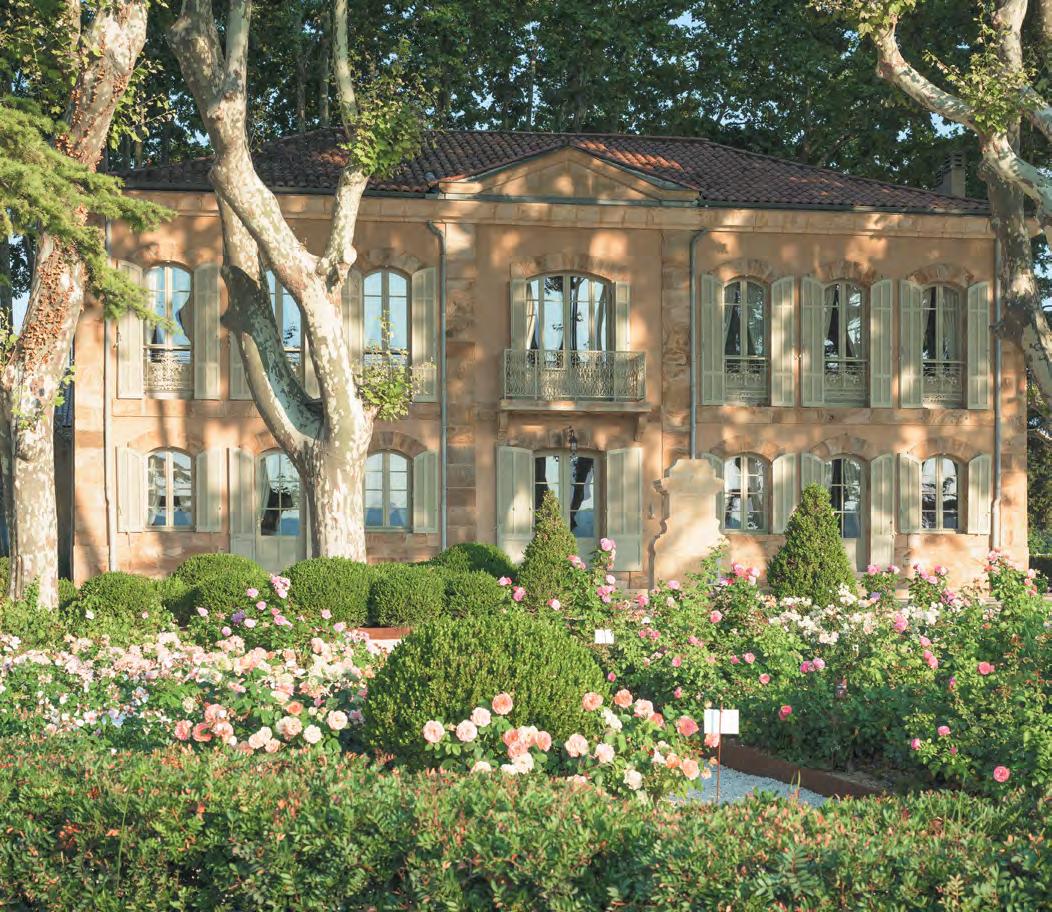


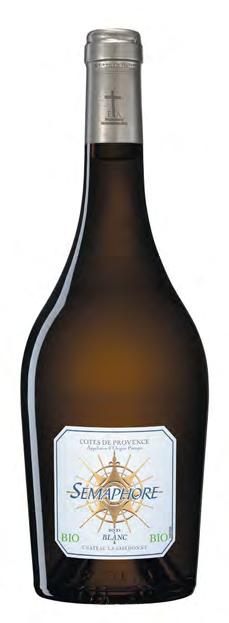

Please drink responsibly.
The Inaugural Sydney Spirits Festival set to be Australia’s largest
The Sydney Spirits Festival is set to become Australia’s largest this May, with a total of 148 brands to be showcased in each of the five three hour sessions.
The event is being organised by Judith Kennedy, the woman behind the now nationwide Gin Festivals, and will feature spirits categories as diverse as whisk(e)y, gin, soju, schnapps, rum, agave, vodka, vermouth, grappa, tequila, liqueurs, fortified wines, and more.
Various industry personalities will also be present, including Australia’s ‘Godfather of Whisky’ Bill Lark, Buffalo Trace brand ambassador and bourbon expert Gee David, Hickson House’s Mikey Enright, and plenty more. Beyond interacting with attendees on the floor, the hefty list of experts will also be conducting exclusive masterclasses to shine light on their craft.
The Sydney Spirits Festival will take place at the Overseas Passenger Cruise Terminal in Sydney Cove from Friday 10 May to Sunday 12 May.
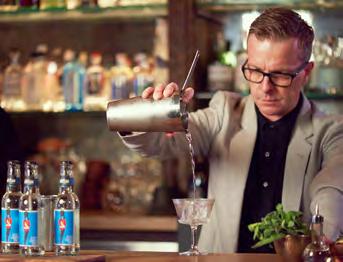
WSET Beer courses now available in Australia
The Wine & Spirits Education Trust (WSET), the global leader in drinks education, has today announced an extension to its Australian program with the additions of accredited course providers for its Level 1 and Level 2 Awards in Beer.
“We have identified Australia as the most important market to launch our

WSET beer qualifications in the Asia Pacific region, based on production and consumer engagement,” said Sarah Andrew, WSET Head APP Development, APAC.
Initially, five organisations across four states have been accredited as official course providers. Beer is the fourth WSET drinks category in Australia, following on from wine, spirits and sake.
The two new beer qualifications cater to beginner and intermediate levels.
Applications open for Penfolds Evermore Grant
Penfolds have pledged to donate $1 million dollars over a five year period through the rollout of its Evermore Grant, with $200,000 available in its inaugural 2024 instalment.
In addition to winemaking/viticulture, projects in areas such as food and creative arts (including fashion, art and music) are also able to apply. The winning projects will be those that demonstrate potential to make strong positive contributions to areas such as community and culture, future winemaking, and sustainability.
“In life and in business, it’s important to give back,” said Peter Gago, chief winemaker.
“Penfolds has been blessed with 180 years of successfully making and selling
wine. Our footprint may be found across many vineyards, across many countries.”
Expressions of interest can be submitted online up until 17 March.
$100,000 BRII grant available for alternative wine packaging innovations
The Federal Government has announced that it will be offering grants of up to $100,000 to startup and SME companies targeting renewables and low emission practices. The grants will form part of the Business Research and Innovation Initiative (BRII), which has been allocated a total budget of $7.5 million for its current funding round.
Three challenges have been established for the current Renewables and Low Emissions Round, with the third being ‘alternative packaging for premium Australian wine.’
If successful, applicants will be granted up to $100,000 in funding to develop and test their packaging solutions. Following this, the BRII will open a shortlisting process for additional grants of up to $1 million to develop a prototype or proof of concept.
Previous rounds of the BRII program have already provided 115 grants totalling more than $37 million.
News
drinks trade 17
ELEVATING EXCELLENCE:
DMG Fine Wines’ Organic Journey and the Next Chapter for Arras
LAST YEAR’S PURCHASE OF THE ARRAS WINE BRAND BY DMG FINE WINE WAS ONE OF THE MOST FOLLOWED STORIES OF THE YEAR ON DRINKSTRADE.COM.AU. AVID READERS WERE KEEN TO DISCOVER WHICH BUSINESS WOULD CONTINUE THE LEGACY OF AUSTRALIA’S MOST AWARDED SPARKLING WINE BRAND. DMG FINE WINES' SUCCESSFUL PURCHASE MEANT THAT THE ICONIC AUSTRALIAN BRAND WOULD JOIN AN ALREADY PREMIUM PORTFOLIO OF CAREFULLY MANAGED AND CURATED WINES PROUDLY SHOWCASING SOME OF THE BEST WINE REGIONS IN THE COUNTRY.
The DMG Fine Wines business has been on its own journey moving to sustainable and organic winemaking practices across their portfolio. That transition, not without its challenges, has been led by CEO William Dong and Chief Winemaker Peter Dillon, and now joining the business is Ed Carr, one of Australia’s most awarded winemakers. The excitement is palpable and athough the opportunities for growth in Australian wine are not easy to find right now, DMG's premium portfolio of award-winning wines is charting a course that champions worldclass Australian wines both domestically and abroad.
WILLIAM DONG – CEO DMG FINE WINES
Ashley Pini: DMG is a leader in sustainability, both certified organic and a member of Sustainable Winegrowing Australia. Where did you start on this path and how pervasive is this within your business?
William Dong: The answer is we’ve gone all in. Sure, in the early stages there were challenges with resources, and we thought maybe we would make some organic or biodynamic and some we would continue the conventional way. But then we decided that it had to be all or nothing. We must be consistent, which I think will become more and more important across all Australian wineries, not just ours, but broader
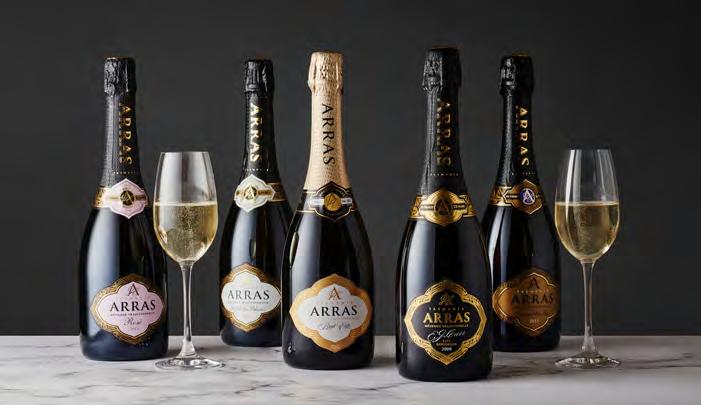
across the industry. It’s the right thing to do…100%. It wasn’t a decision I made quickly or lightly, it took many years to make the decision to go organic.
The questions we were asking ourselves were: How can we make better wine, and can we make the environment better? I was constantly looking for answers, then one day I was talking to an Italian winemaker, Alberto Antonini, someone I really respect, who helped me a lot with the difference between organic, biodynamic and natural wine. It just made sense to me; it’s all about the health of the soil… look after the soil and the vine will be happy and strong, the roots grow deeper, and as a result you get better wine.
Philosophically it makes great sense, but a lot of wineries understand this beautiful
concept, but they don’t know how to do it well. When I’m producing a product, quality is the number one priority, but it must also be good for the environment and good for the people who work and visit our sites.
I’m very careful when I visit a vineyard, I’m aware of the chemicals that may be used there. Even working in a beautiful place like a vineyard, human beings are vulnerable. So that’s why I thought, okay, now I’m 100% convinced. Firstly its, good for the quality of wine, and secondly I’m doing something right for the environment and the people who work there.
I went to speak to Peter (Dillon). He liked the idea too, and we simply said, “we need to make a decision”. We need to make that change. We need to convert everything into organic. It was a hard because it was
Viewpoint
18 drinks trade

Peter that had to do the work; he needed to convince everyone in the production and make sure the whole business was moving in the right direction.
Ashley Pini: The recent purchase of Arras has added an iconic Australian product to your already premium portfolio of brands. The business must be excited to have Arras join the fold.
William Dong: We proudly produce great Australian wine and Arras compliments our portfolio perfectly. In Peter Dillon and Ed Carr we now have a couple of the best winemakers in Australia. Pete has been doing amazing things with the Handpicked range and Ed’s so creative and passionate about what he’s doing.
I see my role as giving them the freedom and the horizon to dream up what else we can do. I know we’re producing some of the world’s best wine already, but what else can
we do? How can we push the boundaries even further? They have the skills to do so, and the freedom to do it.
Ashley Pini: So where do you take Arras from here?
William Dong: We are looking at a brand like Arras and thinking, how can we add value to a brand that is already so successful quality-wise? The number one priority is to continue to do whatever they’re doing, in terms of winemaking. The second part is to get distribution in places that it’s never been in…the right places, including more key markets. Europe is one of our focus markets, so we’re investing there. At the same time we do need to be choosy because we don’t have the volume to supply everywhere. It’s about being in the right places.
We are proud of the Australian products we have, and Arras helps us on the international stage. I’m not interested in
going to compete with entry-level wine: we definitely want to only play in the premium sectors. Having a brand like Arras means we can go to the world and compete with the best.
I don’t want the team to get distracted chasing volume (at the risk of quality). Some people say you can have both, but in reality, if you try to do everything, then you’re not doing anything well. Right now the whole production team is focused on premium, premium, premium. Over the last couple of years, especially with Handpicked, it’s showing. Our Handpicked Single Vineyard 2022 Wombat Creek Yarra Valley Chardonnay recently picked up three trophies including Best Victorian Chardonnay, Best Australian Chardonnay and the François De Castella Trophy for the Best Young White Wine at the Melbourne Royal Wine Awards.
drinks trade 19
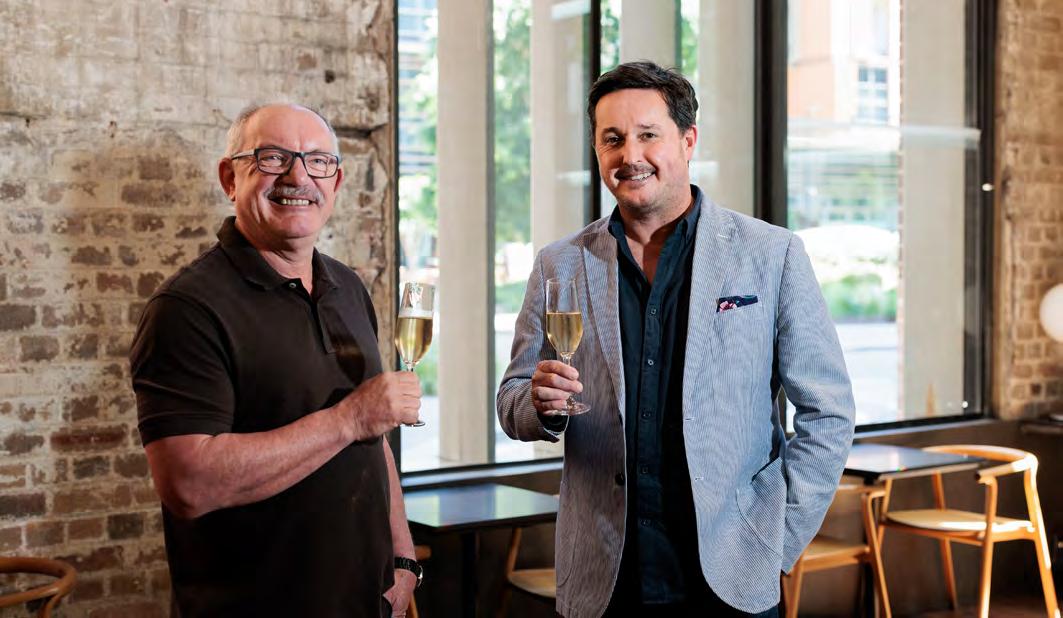
PETER DILLON –HANDPICKED WINES CHIEF WINEMAKER
Ashley Pini: Carrying on from my chat with William, he seemed really passionate about DMG’s renewed sustainability focus... what’s your take as Chief Winemaker?
Peter Dillon: It came about because we were looking at how we were going about the process of producing wine and wanting to make it better, and I suppose in those conversations, it started with the notion that, to make a great wine, you have to start with great fruit. That sort of distilled into, well, if we’re going to have bunches of grapes in the best and optimum quality, we really need to have the healthiest of vines, and then leading into that, by default, we then have to have healthy soils, and that was where we started deep diving on the process of what we could do to really make positive changes there that would flow through.
I think we definitely are seeing a change because there’s an evolution in terms of complexity of flavour and also probably tannin evolution.
AP: You produce wine across multiple regions - are some more challenging than others?
PT: If we use the Yarra as an example, we’ve got Wombat Creek. It’s the highest vineyard in the Yarra, it’s surrounded by sort of big stands of mountain ash, it’s annual rainfall you can measure in metres, all those sorts of things.
And if you compare that to our site in Yarra Glen, Highbow Hill, it’s got half the altitude, it’s got about half the rainfall, so all those factors make quite a big difference and we therefore have to adapt and work smartly with the sites that we have to optimise the outcome.
I think for us, the last three seasons of that La Niña pattern probably were as good a challenge as you’ll find: wet, cooler, all those things. That puts pressure on your vineyard practices from a disease point of view and we definitely did see that pressure play out, but I think the flip side of that is the conventionally run vineyards around us did too. This year there would be growers in the Yarra that would be complaining about it being a really bad downy mildew pressure year, but we’re certainly no worse off than anyone else.
AP: Which of your wines is exciting you most at the moment?
PT: The recognition from at the Melbourne
Wine Show last year with the Wombat Creek Chardonnay from 2022 was fantastic! It’s an iconic site in an iconic position in the Yarra - the upper Yarra tends to have this wonderful finesse and elegance and restraint to it, but in conjunction with that we have these old vines so you get this concentration and power of flavour as well.
AP: How much Wombat Creek Chardonnay was made this year?
PT: For that single vineyard wine, it’s only a small batch. So in reality, it’s a couple of hundred dozen.
It’s due for release in the next month, so it’s going to hit the ground, but it’ll run out the door.
AP: Are there any regions that you don’t currently produce out of, but would like to?
PT: I think Gippsland is a fascinating region for the future of Australia: huge in terms of area and diverse in terms of sites, but I think there’s some really amazing parcels and wines coming out of there at the moment.
AP: Onto the latest acquisition… Were you in Tasmania prior to Arras? And is this DMG’s first sparkling wine?
PT: We had two sites there on the Tamar,
Viewpoint
20 drinks trade
House of Arras Ed Carr with Handpicked Peter Dillon
so yes. Tasmania has been sort of in the portfolio for a while since 2019.
We had started making a Tasmanian non-vintage cuvee using the fruit from the two sites in the Tamar, but obviously on a much smaller scale compared to what we’re dealing with with Arras.
AP: How exciting is it for you to welcome Arras into DMG’s portfolio?
PT: It’s incredibly exciting, and I think there’s probably different layers to that. There’s that element of excitement where we just saw it as a fantastic opportunity and a fantastic fit in terms of our interest in premium and top-end wines.
It’s also nice being able to ensure that continuity of a family Australian-owned business, taking it on and ensuring that longevity for the future. I think it’s a lovely fit in terms of the dynamics for both brands.
And working with Ed is pretty special, he’s one of a kind! I’ve worked with him in previous roles when I was in the senior winemaking team for Hardys back in the day so we’re not strangers to each other.
There’s so much to like about working with Ed - so understated but also so accomplished.
ED CARR – ARRAS CHIEF WINEMAKER
Ash Pini: Having spoken with both William (Dong) and Peter (Dillon), I get a sense of the journey you’re embarking on; this must be an exciting new chapter for you?
Ed Carr: It certainly is! The initial signs are so positive… I think it’s going to be absolutely brilliant.
AP: How smooth has the acquisition process been?
EC: There’s still so much work to do, obviously - I think William will agree that they’ve got to build the Handpicked wines team to handle this sort of volume and placement both domestically and internationally, but having said that, they’ve already crossed a lot of those boundaries with other premium products.
AP: How will the deal impact you personally?
EC: I was travelling a lot and then COVID
got in the way and then it didn’t really restart to the full speed again after that, but I’ve just come back from the UK - I was over there for the Australia Trade Tastings - It was even more of that ‘renaissance’ feeling.
People hadn’t tasted these wines for a long time, the media was very excited. Nothing’s signed yet but there’s some deals to be done with distribution in the UK and Europe! It’ll come back to William and his marketing team to look at profitability and price points and such, but there seems to be a market gap opening up where a brand like Arras can fit exactly into.
AP: What are your thoughts on the reverse of that - how has the expansion of Champagne brands into Tasmania and New Zealand impacted Arras?
EC: I think there’s this real polarisation of the Australian sparkling market. A lot of the bigger, older brands are becoming pricepoint fixed, and so, as the cost of production goes up, the quality goes down - you’re always looking for ways to make it cheaper.
The commercial end of the market’s doing it tough and always trying to hold a price point puts constraints on it. Where Arras is positioned, there shouldn’t be that constraint. Obviously, we’ve got to be aware of what things cost, but we’re certainly not driven so much by volume.
To get back to your question, the top end of Australia is doing really well and I think anything that does well out of Tasmania in particular is good for Arras too. Conversely,

Arras has done a lot to put Tasmania on the map globally, so it works both ways.
AP: What did the DMG purchase entail exactly? I understand DMG bought the winery?
EC: Yeah, not just the brand. DMG did buy what was called the Bay of Fires winery and the Bay of Fires vineyard, which is around that winery - that’s now called Handpicked Pipers River Vineyard.
Penny is the Senior Winemaker at Arras and manager of winemaking in Tasmania. Kathryn Bevan is there as a winemaker - Handpicked really needed a full-time viticulturalist to look after now three-owned vineyards and a lot of leased area and growers - so I think it’s a really positive move to have a boots-on-the-ground, full-time viticulturalist in Tassie.
AP: Will there be much change at Arras under new ownership?
EC: I don’t think there will be. The tirage, depending on the product, between four and 15 years is sort of locked in place. With the purchase of this tirage, Handpicked Wines now own the fantastic heritage of maturing stock and museum wines which are unique and integral to this brand. We know exactly what we’ve got of each product for each vintage for many years and they were all made to the style.
The thing that we will need to do is to consolidate supply. We’re very much reliant on growers who have been brilliant, there’s no doubt about it, and we’ll continue to work a lot with growers I’m sure, but I think it’s William’s philosophy that [we should] own a bit more, so maybe growth will be in more leased or joint ventures or purchased vineyards.
Who knows long term what the supply/ demand balance will be, but now it’s very tight - there’s a lot of competition for fruit.
AP: Have you got much stock saved up?
EC: Yes, we have very good stocks of tirage, nothing in tank though as we finished bottling the 2023 wines last night.
Overall, we’re about a half a millionbottle producer, maybe a bit more. Depends on whether you count what’s coming in as tirage because we’re trying to build or what’s coming out as sales.
drinks trade 21
MEET THE INSPIRING WOMEN BEHIND WSET’S NEW AWARDS IN BEER
WHILE THE BEER INDUSTRY MIGHT STILL CONJURE UP STEREOTYPES OF BLOKISHNESS AND GENDER IMBALANCES IN THE EYES OF MANY, THIS LINGERING REPUTATION IS STEADILY BEING LEFT IN THE PAST. THE ROAD TO PROGRESS HAS NOT BEEN STRAIGHTFORWARD, HOWEVER, AND WOULD NOT HAVE BEEN POSSIBLE WITHOUT PIONEERING FEMALE FIGURES LEADING THE WAY.
In the same time span, the Australian beer industry has also become more professional in regard to aspects such as production quality, knowledge of workers, and attitudes to education. With WSET recently announcing the first accredited providers of its Awards in Beer, we thought it the perfect opportunity to sit down with Sarah Andrew, Jane Lewis, and Natalya Watson, three women who have not only made WSET Beer possible but that have been pivotal in the ongoing process of shaping the more diverse and welcoming beer industry found in Australia today.
Sarah Andrew
WSET Head APP Development - APAC
Sarah Andrew joined WSET (Wine & Spirit Education Trust) as Business Development Manager for ANZ in September 2019 to support a growing network of WSET Approved Program Providers (APP) and their students. Prior to joining WSET, she ran her own beverage consultancy (Selador Wines), with a focus on marketing, sales, brand development and education. Sarah
has completed the WSET Diploma, Level 3 Award in Spirits and recently Level 1 and 2 Award in Beer. She is a WSET certified educator for wine, spirits and now beer. In addition, Sarah is Cicerone Beer Server qualified and a CMS Certified Sommelier. As president of Sommeliers Australia, Sarah is actively involved in the development of members, both professionally and from an education perspective.
How did you break into the industry –what was your background?
Sarah Andrew: Like most people, I transitioned from another industry. I studied BA(Hons) BSc at Monash University and was about to start a PhD in paediatrics when I took a six-week trip to Europe before continuing as a life time student. Six weeks became seven years and my exposure to the food and wine scene in Europe saw me pivot from medical research to the beverage industry and I completed WSET Level 2 and Level 3 Awards in Wine. The rest is history as I set up Selador Wines back in Australia (2005) and continued my studies with Court of Master Sommeliers, Certified
Sommelier and then WSET (Diploma in Wines & Spirits). This led to spirits and now beer. I have worked in many aspects of the beverage / hospitality industry for over 20 years, including imports, distribution, marketing and sales, but it has been education that captured my interest when I completed the WSET Educator Training Program (ETP) in early 2013. I have been teaching ever since and in December 2023, I accepted the role with WSET as Head Approved Provider Development – APAC.
Do you think being female has hindered or helped you achieve success in the beer industry?
SA: When getting my start in the wine (not beer) industry, there were times when my gender was an issue and opportunities passed me by. This may be one reason I have become a lifelong student in the beverage industry, upskilling in wine, then spirits and now beer. Whilst there are some similarities the different categories have so many exciting nuances. To be seen is to be heard, so I have taken as many opportunities as possible to expose myself to new
International Women's Day 22 drinks trade
environments, aspects of the industry and with that people. I have watched so many successful women progress their careers in both the hospitality and beverage industry, which has been inspirational. Like minded professionals bring an understanding and invaluable network of professionals to engage with to foster positive energy and success.
What advice would you give to women looking to carve a career in the beer industry – how can you stand out from your competitors?
SA: If I reference the NIKE slogan here – “just do it!” Sara Hobday, who is WSET Head of Research & Curriculum for Beer is a great example of success from an education perspective. Natalya Watson & Mirella Amato, WSET Business Development Managers in EMEA and The Americas respectively are two more great examples of success in the beer industry. Then I look closer to our market and have the pleasure of working with Jayne Lewis (formerly successful brewer for numerous brands in Australia), who is now WSET Business Development Manager, APAC. The internal team for beer at WSET is headed by four incredibly successful women, this to me speaks volumes.
Drinks Trade: Why is education so important in the beer sector? What advantages (career progression, salary, travel etc) are to be gained through education for beer professionals?
SA: As an educator in the beverage industry, I’ve learned that the more you know the more you realise you don’t know! This is why I keep reading and studying and studying and reading. Beer like spirits starts with raw materials and such diversity at that. Each student brings with them personal and sometimes professional experience that is worth sharing. My role is to navigate through the required material to ensure students receive new information in a way they will retain for their final
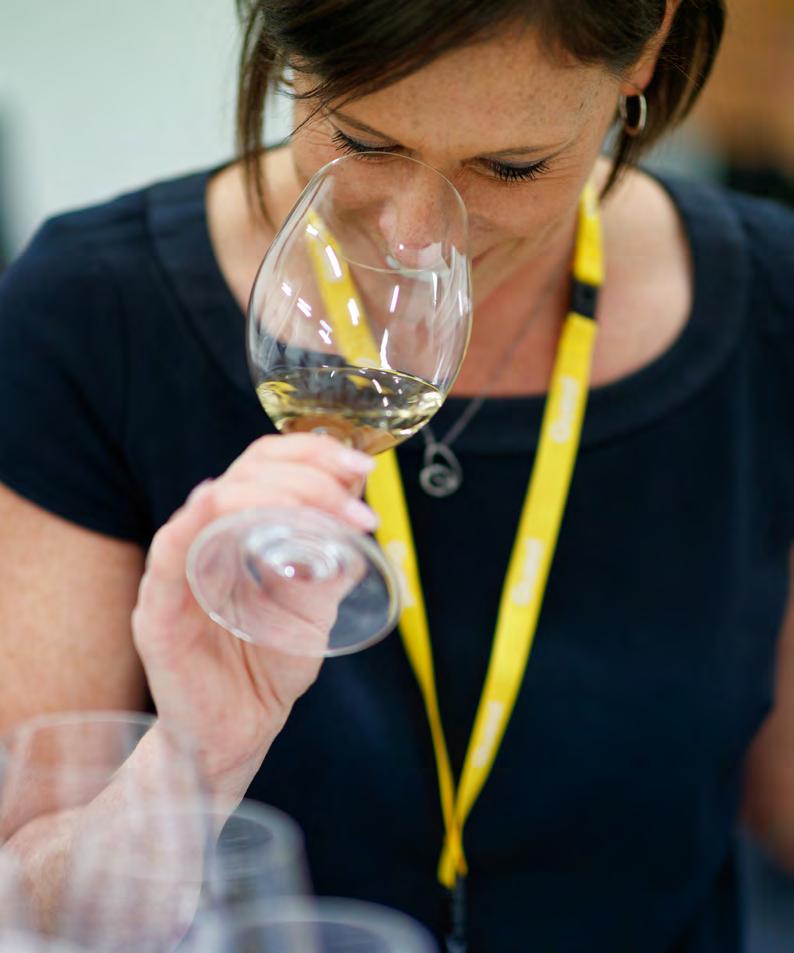
assessment, whether it be a written exam or tasting exam.
One of the greatest strengths of WSET is that educators must have studied the courses we offer, and then undertake a rigorous Educator Training Program to be approved to deliver our courses. For this reason, WSET educators have been students themselves and have a greater empathy for the learning journey. This also brings an elevated level of credibility.
The outcome is a collection of transferrable skills coupled with elevated knowledge and both can be drawn upon for employment opportunities and also promotions.
What sets the WSET Beer Qualification apart from courses offered by your competitors?
SA: WSET is the leading global provider of
drinks education, which has included wine, spirits and sake. There was an investment in research on beer providers globally and whilst some may focus solely on production, or on beer styles, there remained an opportunity to bring production, tasting technique (Systematic Approach to Tasting®), food pairing, service and storage plus beer styles into the two award levels that launched in February 2024; Level 1 and Level 2 Awards in Beer.
With an examination to conclude both courses, successful students and industry professionals walk away with a global qualification they can use professionally if required. This will become very important in time as I now see advertisements for jobs and wine / spirits judging that reference it being ‘ideal for candidates to hold Level 2 or 3 Awards in Wine / Spirits. I look forward to seeing beer as part of this in the future.
drinks trade 23
International Women's Day
What are the three best things about working in beer – what do you love about this industry?
SA: Whilst it is early days since the launch of WSET Awards in Beer Globally, I believe the three things I see mirrored in wine and spirits that transfer directly to beer are: Storytelling, by professionals, students and consumers alike – there are so many of them and I never get sick of listening and learning – people are an integral part of this. Education & Professional Development: upskilling those in the industry keen to progress their careers. I have the pleasure of seeing others progress their careers and it is a bonus to be a very small part of this journey, and Food pairing: the sheer diversity of cultures and with that cuisine in Australia makes this an ongoing discovery, that for me has only just begun – it will be one beer at a time that I will happily take on this journey!
Jayne Lewis, WSET Business Development Manager, Beer - APAC
A trailblazer in the Australian brewing scene, Jayne is renowned for founding Two Birds, the country’s first femaleowned brewery. With accolades including Entrepreneur of the Year, Beer & Brewer Lifetime Achievement Award and multiple brewing medals and trophies, she’s made a lasting impact. A champion for diversity, Jayne founded the Pink Boots Society Australian chapter in 2012 and launched the ‘Beer Agents for Change’ foundation in 2021. Her educational background includes a Bachelor of Science in Viticulture & Oenology, a Diploma in Brewing, a Change Management certification, and more. In 2023, Jayne established Full Colour Life, a coaching service promoting fulfillment. Now, as Business Development Manager for Beer at WSET, Jayne continues sharing her passion for beer and empowering others.
Drinks Trade: How did you break into the industry – what was your background?
Jane Lewis: While studying Viticulture and Oenology at University in Western Australia

I worked in a winery in Margaret River. One day, enjoying an excellent beer at Little Creatures in Fremantle, I said to myself “I’m going to work here.” A few years later they advertised in the newspaper for a Brewer (really dating my age here!) and I got the job! That was 20 years ago and I’ve never looked back.
Do you think being female has hindered or helped you achieve success in the beer industry?
JL: When I started brewing, there was only one other female brewer in Australia and I remember being at awards events where the only other women present were partners of brewers. When I was coming up the ranks early on in my beer career, companies were keen to address the gender imbalance, so I believe that it helped my professional progression. This was especially
true in the beer judging scene, where it got me a foot in the door. Regardless of how the door opened, once inside, I worked incredibly hard to gain credibility and respect. I have also been very intentional about helping women who have joined the industry after me, by starting Pink Boots Society and Drinks Agents for Change, both organisations created to provide support for minorities in the Drinks industries.
What advice would you give to women looking to carve a career in the beer industry – how can you stand out from your competitors?
JL: Through operating Two Birds Brewing for 12 years, I learned that standing out from competitors and achieving success comes down to being authentic. Show up as your whole self, you don’t need to conform to stereotypes or “be” a particular way to
24 drinks trade
be successful in the industry. If a company requires that of you, it’s probably not a good fit. Choose your own path, find companies that resonate with you, that LIVE their values and that take care of their staff.
Why is education so important in the beer sector? What advantages (career progression, salary, travel etc) are to be gained through education for beer professionals?
JL: One of the most remarkable outcomes we’re witnessing amongst graduates of our new WSET Beer Award is increased confidence. Students are receiving enough information to feel comfortable and confident to have conversations around beer that they would never have had before. The use of a standardised language via WSET’s world renowned SAT (standardised approach to tasting), makes it very easy for students to connect with and hone their skills. We see this as being incredibly valuable for both enthusiasts and those in consumer facing roles in beer, whether that be hospitality, sales and marketing through to those engaged in breweries in accounts, logistics and administration staff.
What sets the WSET Beer Qualification apart from courses offered by your competitors?
JL: I love the interactive nature of our beer qualifications, especially the tasting component! Whether online or in person, students get to engage with other like-minded individuals to learn about production, beer styles and get to taste amazing beers together. I love watching the connections between students grow and the look on people’s faces when they start to be able to connect what they’re tasting with words – it’s the best! I believe the courses could be a great team building exercise.
What are the three best things about working in beer – what do you love about this industry?
JL: I love the beverage, but most of all I love the people in the brewing industry. It attracts a very down to earth type of person and I have made some amazing friends along the way.
Natalya Watson, Business Development ManagerBeer, WSET
Why beer – what is it that drew you to this industry?
Natalya Watson: The story’s pretty simple really: back in the early 2010s good friends introduced me to good beer, I thought the flavours were fascinating, and from there, I set out to learn everything I could about it! (It also helps that I have a degree in microbiology, so a lot of the science of beer made sense to me from the get-go.)
There is another layer to the story though. My beer epiphany took place when I was in graduate school… studying public health, of all things! I was at UC Berkeley in northern California and we had some amazing local beers available to us, like Russian River’s Pliny the Elder Double IPA and Deschutes Mirror Pond Pale Ale. It was these beers (which are nothing like your standard American lagers!) that piqued my interest and my beer adventures
began. (And, although I left public health a long time ago, I will point out that all of my beer education work always includes a responsible drinking reminder!)
How did you break into the industry –what was your background?
NW: Like most people, I’ve had a rather roundabout way into beer. I studied microbiology at UCLA, then pursued my master’s in public health at UC Berkeley, focused on food safety and nutrition. And after a short food policy internship in Washington, DC, I moved to New York City and worked in communications and marketing for an organic baby food business.
I’d been introduced to good beer by good friends back in graduate school though, and my interest in it only continued to grow! Outside of my day job, I was visiting bars, breweries, and bottle shops across NYC and beyond. I took on a parttime bartending role, home brewed and blogged with friends, and began formalising my beer education through the Cicerone Certification Program.
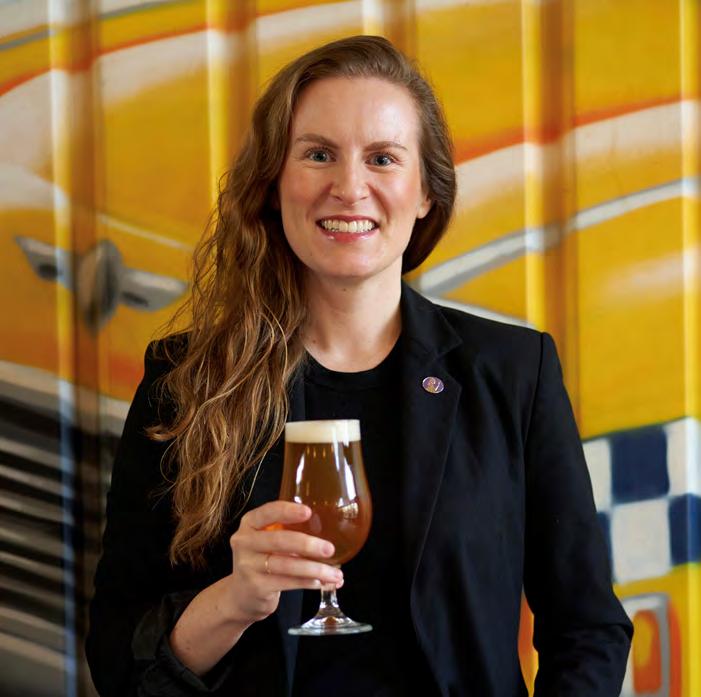
drinks trade 25
After three years building up my beer geek credentials, I was ready to see if I could work in beer full-time. So I took the plunge and relocated to London. I got my start working behind the bar at Mother Kelly’s in Bethnal Green and it was there, at a monthly meet-up of women in beer called the Crafty Beer Girls, that I learned about an opportunity with Belgian brewery Duvel Moortgat, which was the perfect opportunity to combine my skills in marketing and communications with my passion for beer.
During my three years as Duvel’s UK marketing manager, I really focused on developing my beer expertise and Duvel very kindly supported me in my pursuits. I achieved both my Certified Cicerone® and IBD Beer Sommelier accreditations while I was there. I also began teaching at The Beer & Cider Academy, judging at beer competitions, and launched a podcast called ‘Beer with Nat’ to help shine a spotlight on the incredible women in the beer industry that I was meeting along the way.
Realising my true passion was educating others, I left Duvel to focus on beer education and that set me on the path I’m on today. In 2020, I became an Advanced Cicerone®, my debut book – Beer: Taste the Evolution in 50 Styles – was published by Kyle Books, and I founded my own online beer education business, Virtual Beer School. Within a few years, over 400 students had taken my courses and I was named “Training Professional of the Year” at the British Institute of Innkeeping’s 2022 National Innovation in Training Awards. But when I was approached late 2023 to support the launch of WSET’s new beer qualifications... I simply couldn’t say no to the opportunity to help bring beer education to an even bigger audience!
Do you think being female has hindered or helped you achieve success in the beer industry?
NW: When getting my start in the industry, I don’t really think my gender had an impact either way. As a bit of an anecdote, way back in my senior year of high school, I was voted “most driven” in our yearbook superlatives. I’ll admit, I definitely wasn’t sure what I was driven to do back then! But it must have been clear to people that when
I set my mind to something, I go for it. And that’s how I felt about beer. I discovered a new passion and, by hook or by crook, I was going to find a way to pursue it. Further into my beer career, as I was building my personal brand and later my own business as a beer educator, I’ve found being female to be a strength. Many women let me know that they sought out my courses because of the opportunity to learn from a female educator, as their previous experiences with beer had been very maledominated.
Following the old adage, “if you can’t see, you can’t be”, being a visible woman in beer lets other women know there’s a place for them in this industry, too. So the more of us there are, the better!
What advice would you give to women looking to carve a career in the beer industry – how can you stand out from your competitors?
NW: In my experience, most people who are seeking out a career in beer are pursuing a passion. And that passion is incredibly important, but it’s only one piece of the puzzle. The other piece is to think about what your career skills and strengths are and how you can combine them with your passion.
In my career, I got my foot in the door because Duvel was looking for a new marketing manager and I had developed my marketing and communication skills in the baby food world. There are so many transferable skills that people can bring to beer. It’s about recognising your strengths and finding your niche within the industry where you can apply them. Whether you’re a talented communicator, have a head for finance, or are a brilliant recipe developer, there are so many different ways to work in beer.
If you need any inspiration, check out my podcast “Beer with Nat” for 50 interviews with women who work in beer across a huge range of roles, talking about how they got into the industry and why they love it!
Why is education so important in the beer sector? What advantages (career progression, salary, travel etc) are to be gained through education for beer professionals?
NW: As a beer educator, I’ve learned that while the origins of beverages like wine and cider are obvious to most consumers –grapes and apples, respectively – what beer is made from can be tricker for us to wrap our heads around! And if we don’t know what ingredients are used to make beer, it’s much harder to then know what flavours are even possible to find within it. Which is why beer education is so important.
In every tasting I host, I always spend some time talking about not only how to taste beer, but what we’re tasting for. I’ll introduce beer’s four main ingredients –malt, water, yeast and hops – and talk about their roles in the brew and the flavours they can contribute to beer. Then I’ll explain that by making different choices for each of these ingredients – base v. specialty malt, ale yeast v. lager yeast, American hops v. British hops – brewers can create over one hundred different beer styles. (Which is why I’m so confident there’s a beer out there for everyone!)
Crucially though, in order to be able to explain this to our consumers, we as beer professionals need to be educated ourselves.
While there is a lot of great information about beer available online, unfortunately, there is also a lot of misinformation out there, too. This is why I decided to seek out a more structured approach to beer education through a formal qualification, as you can be confident that you’re learning the correct information and you get a chance to show what you know by having your level of knowledge assessed to a certain standard.
Qualifications aren’t just about building knowledge though, they’re about developing skills, too. Particularly the skills to taste and describe beers with confidence, which is especially important for providing recommendations or judging beer.
I knew I wanted to pursue a career as a beer educator, so the knowledge and skills development offered through formal qualifications were key for me. Beyond this specific role though, my qualifications have opened numerous doors and helped me progress in my career, as they also gave me the confidence and the credibility to write a book, to build and teach my own online course, to host talks and tastings at trade shows, to be invited to judge at national and international competitions, and more.
International Women's Day 26 drinks trade

I really feel that my studies have had an incredibly positive impact on my career, which is why I’m so keen to support others at any stage in their beer education journey.
What sets the WSET Beer Qualification apart from courses offered by your competitors?
NW: WSET, the leading global provider of drinks education, has applied their learnings from wine, spirits and sake to beer, developing an innovative approach to beer education in the process.
From my experience, what really sets the WSET beer qualifications apart is the focus on developing tasting skills, the interactive and expert-led courses, and the provision of WSET-issued course materials.
WSET focuses on teaching through guided tastings and on the development of tasting skills using their unique Systematic Approach to Tasting®, which equips students with a universal language for describing what they’re tasting and a framework for assessing quality. Additionally, all courses (both in-person and online) are taught using WSET’s interactive learning style, which our beer educators – all beer experts – have been rigorously trained in. We also have a global network of course providers and a single global
syllabus. And in terms of content, students are provided with WSET-issued course materials that are clearly aligned to the exam content, giving students confidence in what they need to know.
The courses have been developed with industry professionals and beer enthusiasts in mind, and students can begin at Level 1 or Level 2 depending on their knowledge and confidence level. Both courses are structured around building students’ knowledge and understanding of key ingredients and how production choices affect beer style – Level 1 covers over 20 beer styles (with a minimum of 10 tastings), while Level 2 covers over 60 beer styles (with close to 30 tastings) – with an introduction to beer service and storage and beer and food pairing included at both levels, as well. Lastly, both qualifications are assessed via a multiple-choice closed-book exam at the end of the course, leading to a globally recognised qualification.
Drinks Trade: What are the three best things about working in beer – what do you love about this industry?
NW: I’ve thought a lot about why I chose to pursue a career in beer (as you’re about to see!). A few years ago, I broke it down to what I call my “A. B. See.” philosophy. I
love working in the beer industry because beer allows me to: achieve expertise, bring people together, and see the world.
A: Achieve expertise. Today, I’m qualified as an IBD Beer Sommelier, Advanced Cicerone® and WSET beer educator and have my WSET Level 2 Award in Beer. I understand the value of these qualifications in building confidence and credibility and am happy to support others at any stage in their beer education journey.
B: Bring people together. From my earliest days exploring the beer scene in New York City, to meeting the Crafty Beer Girls in London, to hosting my Virtual Beer School courses during the pandemic, or even just a pint at the pub with pals, beer brings people together. And connecting over a shared passion allows us to realise we’re all much more alike than we are different.
See: See the world. From America to England, Belgium to Germany, beer is global and the best way to understand most beer styles is to seek them out at their source. Following my passion for beer has led me from local brewpubs, to behemoth breweries; from the underground cellars in Pilsen, to beer gardens in Munich, and the cafes in Belgium. If you want to see the world, let beer be your guide.
drinks trade 27
SUNTORY MINUS 196:

RTD’S hottest PRODUCT
28 drinks trade
In just two and a half years, Suntory’s Minus 196 has achieved the sort of success that most brands will only ever get to dream of. More than just becoming a benchmark both for fruit-based RTDs and for the overarching light RTD category, Minus 196 was the very catalyst behind the recent explosion of Japanese premixes onto the Australian market, becoming a quintessential summer product seemingly overnight. Its secret? A mix of quality product, innovative technology, strong marketing and perfect timing. But the Minus 196 story doesn’t end with its strong leap into the market. Since launching, Minus 196 has continued to develop and broaden, leaving its competition to play catch up in its wake. What’s more, Suntory has a whole swathe of exciting new developments planned for Minus 196 in its near future.
Another factor that helped ensure its success was its solid starting foundations. Introduced to the Australian market in June of 2021, Minus 196 was directly based upon Strong Zero, Suntory’s number one premix brand in Japan. Since launch, it has become Australia’s second-largest light RTD brand and is in the top eight RTD brands overall. In 2023, it was the fastest growing out of that top eight, increasing 26% compared to the year prior. This 26% growth was more than four times the overall RTD category growth of 6%.
Following in the footpath of Minus 196 Double Lemon was Double Grape, which became the most successful product by value to be added to the Australian RTD category in all of 2022. Suntory has further capitalised on this momentum by adding to the Minus 196 lineup, this time with a peach flavoured premix.
Released to Australia this March, Minus 196 Double Peach is based on the peach flavoured Strong Zero, the brand’s third most popular flavour. Hence, the Double Peach release to the Australian market has been highly anticipated.
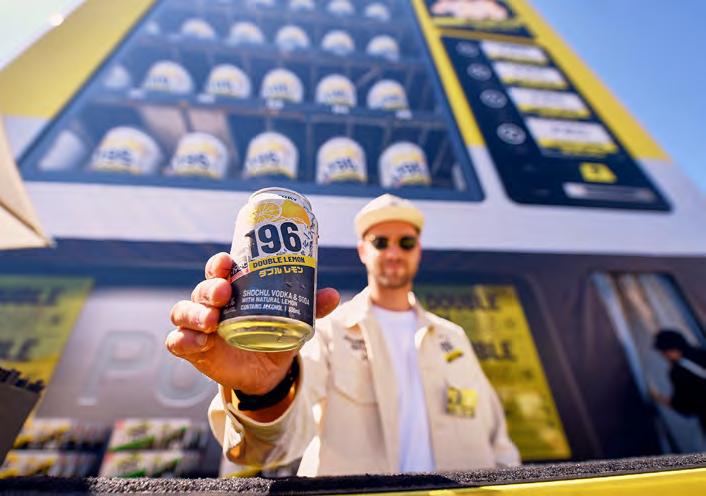

“Minus 196 delivered a step change for the light RTD category with the launch of Double Lemon in 2021 and we are excited to continue to build this brand and deliver another authentic and unmistakably Japanese flavour to this market with Double Peach,” said Trent Chapman, Chief Marketing Officer, Beam Suntory.
Minus 196 Double Peach uses the same Freeze Crush Infusion Technology as its predecessors. This means that, like Double Lemon, the latest addition to the lineup has a bold fresh peach flavour and a light and refreshing structure, all supported by a gentle fizz.
The Freeze Crush Infusion Technology, a method patented by Suntory, involves flash-freezing whole fruit to a temperature of -196°C by submerging it in liquid nitrogen. Afterwards, the fruit is crushed into a powder and infused into the drink. This powder is then mixed with Shochu, vodka, and soda to create the final product. In addition to being an effective method of capturing fresh fruit flavour, Freeze Crush Infusion Technology has also served as an invaluable marketing tool that manages to sound equal parts sciency and sexy. Whilst many of the competition have tried to replicate the Minus 196 product, none have
A Drinks Trade Promotion
drinks trade 29
proved as successful at capturing the hearts and tastebuds of the Australian market.
Minus 196’s marketing prowess is not limited to its Freeze Crush Infusion Technology, however, with the brand also supporting a variety of other activations. One recent instalment of note was its partnership with SXSW Sydney, the famous Texas-based art festival’s first foray into Australia. At the Darling Harbour event, Minus 196 installed a three-storey ‘Extreme Vending Machine’ designed to visually showcase its Freeze Crush Infusion Technology. The attraction drew in over 40,000 consumers and saw more than 11,000 Minus 196 drinks poured over the course of the week.
The activation was further supported by a ‘Found in translation’ poster campaign. The campaign saw Suntory place advertisements written entirely in Japanese in strategic locations in close proximity all around the SXSW Sydney event.
Consumers who discovered the posters were then able to scan a QR code, which initiated an augmented reality experience displaying the technological credentials of the up-andcoming band. Following this, users were presented with a translated version of the poster, giving them with the chance to win a VIP experience back at the ‘Extreme Vending Machine’. The posters, designed by Kentaro Yoshida, both reinforced Minus 196’s Japanese heritage and helped further public knowledge about the products. Suntory estimates that the overall media exposure from the event reached more than seven million consumers in total.
Last year the brand also dropped a merchandise range and launched an online store with a spread of stylish branded items. In addition to the usual t-shirts, bags and stickers, the store has for sale snowboards, bar fridges and even a vending machine.
Collaborating once again with Kentaro Yoshida, a limited edition run of select items were released featuring bespoke Minus 196 original designs by Kentaro that proved to be very popular with his t-shirt range


“Over the last two and a half years, the brand has become a pioneer within the category of light, fruit-flavoured RTDs in Australia, capturing the extreme Japanese spirit, and expanding our local Minus 196 fanbase,” said Trent Chapman, Chief Marketing Officer, Beam Suntory.
selling out within three weeks of release and his other products consistently seen as best sellers.
Since the store launch and website update, Suntory has already reported a tripling of website users. It also reported an increase in user engagement time from 2 seconds to 31 seconds month on month, with weekly engagement time increasing by a factor of 15 and 150 items were sold from the brand’s merch store in the the store’s first month of operation.
Heading into 2024 and onwards, Suntory has indicated that it already has plans to roll out the ‘Extreme Vending Machine’ activation nationwide across various events – most recently, it was activated at the Adelaide Fringe Festival across February and March. It has also told customers to keep an eye out for various new partnerships, flavours and formats arriving soon.
As Minus 196 continues to redefine the very course of the RTD landscape, it can be expected that all competing brands will be keeping a close eye on its every move. It is a unique brand that manages to impart a distinct Japanese authenticity while still feeling well acclimatised to the Australian market. Even though the category is still slowly finding its final form, it is already evident that Minus 196 will remain a
A Drinks Trade Promotion
30 drinks trade

leading authority for Japanese RTDs in Australia moving forwards.
“Over the last two and a half years, the brand has become a pioneer within the category of light, fruit-flavoured RTDs in Australia, capturing the extreme Japanese spirit, and expanding our local Minus 196 fanbase,” said Trent Chapman.
“Since its launch, Suntory -196 has had a huge impact on the Ready to Drink category; we have long known that Aussies have loved the Strong Zero products they’ve experienced in Japan and its great to see the -196 brand being just as well received.”
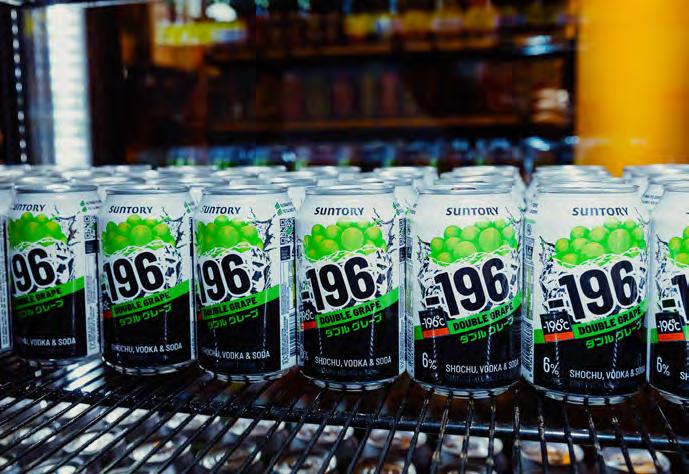
drinks trade 31

INNOVATION, QUALITY, MARKETING AND TIMING
RTD’S ARE THE KINGS (AND QUEENS) OF INNOVATION – THE PRODUCTS THAT FOLLOW THE FEWEST AMOUNTS OF RULES (IF ANY AT ALL), BOASTING SEEMINGLY LIMITLESS FLAVOUR OPTIONS. THEY ARE A MARKETEER'S DREAM, A DRINKER’S FAD, AND SO GETTING THE CONSUMER'S ATTENTION, AND THEN TRYING TO KEEP IT, HAS BECOME THE DOMAIN OF SOME OF THE MOST SKILLED IN THE BUSINESS. FROM FLYING GIANT JIM BEAM CANS INTO THE POOL AT BONDI ICEBERGS TO THE DIRECT CALL TO BEER DRINKERS, ‘WHO SAID BEER OWNED SUMMER?’, THE READY TO DRINK (RTD) CATEGORY CONTINUES TO INNOVATE AND BREAK ALL THE RULES… WHAT RULES?
The last few years have not only seen the regular category innovation, but have also produced new and distinct RTD subcategories, amplifying creative new formats, flavours and ingredients. It’s no stretch to say that Australians love RTD’s: our RTD market is considered ‘mature’ and is the third largest in the world. According to the IWSR, Australia is one of the highest per capita consumers of RTD’s on the planet. Our infatuation with the category boomed in the 1990’s, the 2000’s and throughout the 2010’s, boasting a 13% share of the total beverage alcohol market by 2022.
“This is a sizeable, mature category that is being reinvigorated by the refreshment and premiumisation trends,” says Sarah Campbell, APAC Head of Research, IWSR. “The RTD category is dominated by dark spirit-based drinks that have come under pressure in the face of moderation trends. This has led to the launch of more zerosugar and soda-based variants, keeping interest in the category alive.”

RTD’s drinks trade 33
“IWSR consumer data suggests RTDs are primarily stealing share from beer,” says Susie Goldspink, Head of RTD Insights, IWSR, “but there are interesting differences in age groups, with the LDA Gen Z cohort most likely to replace spirits with RTDs, and Boomers most likely to replace wine.”

Cocktails and long drinks dominate the RTD category in Australia with nearly 70% of volumes, but the segment is losing share to FABs and hard seltzers and recalibrating as a result – having recently seen strong investment in light spirit offerings, rather than its traditional dark spirit base.
Meanwhile, FABs are reinventing themselves, surfing a wave of contrasting and apparently contradictory consumer trends: lower-calorie, higher-ABV, light and refreshing products on one hand; brightly-coloured, very sweet and lowABV drinks on the other.
“FABs currently have multiple sweet spots,” explains Campbell. “It is crucial for brand owners to acknowledge that ‘moderation’ has numerous guises: for some, it means cutting down on alcohol; for others, it’s about fewer calories.”
Meanwhile, hard seltzers are expected to continue to grow off a small base between 2022 and 2027, but far more slowly than in the past few years as recruitment and consumption stabilise.
“The hard seltzer segment is maturing rapidly and is already replicating many of the NPD trends seen in the US, with recent launches focusing on higher ABVs and fuller-flavoured offerings,” says Campbell. “The segment is expected to plateau, sustained by ongoing flavour innovation.”
Before now, this pricing dynamic has failed to deter Australian consumers, who have been prepared to pay a premium for the convenience that RTD products offer. But, with much innovation coming in the spirit-based RTD space, which attracts the highest levels of taxation, there are concerns that this might change in the future.
This is a sizeable, mature category that is being reinvigorated by the refreshment and premiumisation trends,”
-
Sarah Campbell,
APAC Head of Research, IWSR
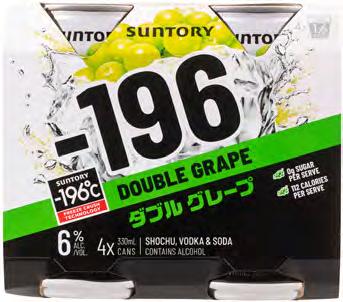
Why the category continues to be so important:
Hugely successful brand launches, such as Minus 196, have created their very own sub-category. Chūhai has long been one of Japan’s favourites. It is literally the abbreviation of shochu-highball, and usually involves shochu, fruit juice and soda. More recently, vodka has started to join the party. As consumers continue to embrace this new category of light fruit-based RTDs, it may well begin to incorporate other spirts such as sake. There are now numerous brands launching their own takes of this new drink style into the Australian market, however it is clear that Minus 196, which started the trend, remains as king. More than just establishing the new category in Australia, Minus 196 continues to dominate sale statistics and is both the second largest light RTD domestically and in the top eight overall.



As reported in last year’s Hottest 100 Report, within the RTD category Vodka based RTD is driving growth for the category with a +12.4% value growth vs YA while Seltzers are seeing value decline -11.7% in the last year.
In terms of flavours Citrus & Grape we are seeing strong growth driven by Minus 196, while classic flavours of Cola and Creaming Soda were also performing well driven by Bilson’s and Jack Daniels.
Timing, flavour and marketing reign supreme in the world of RTDs. One
RTD's 34 drinks trade


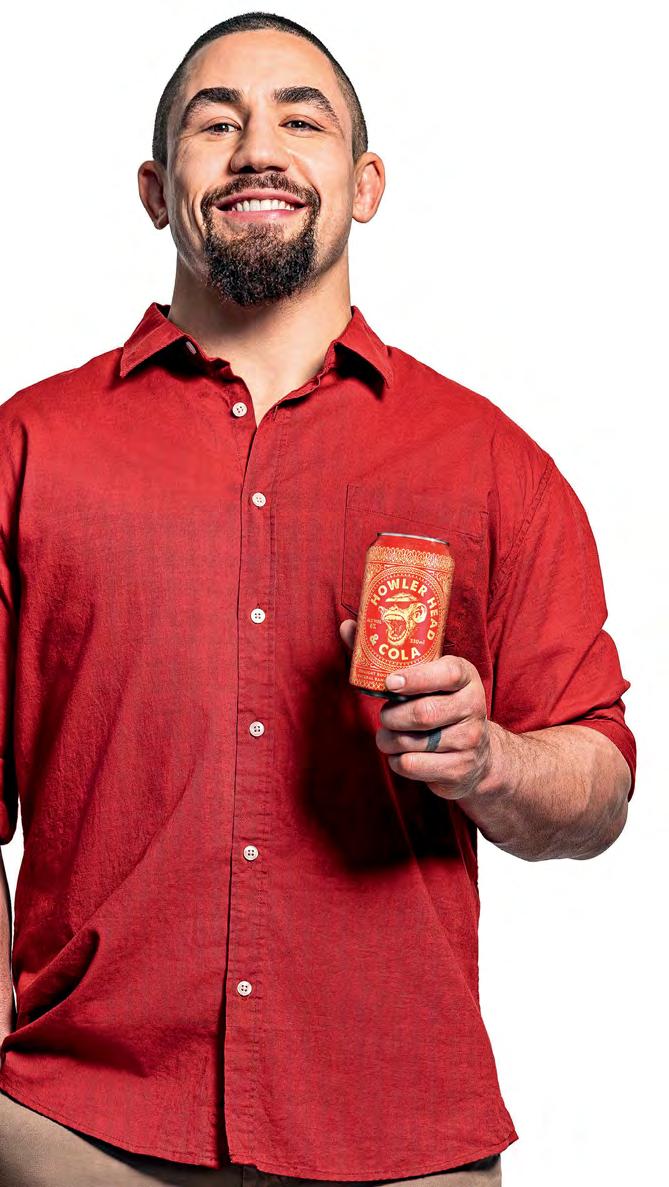




Cocktails INTRODUCING NEW [yellow tail] SPARKLING
Iconic Australian wine brand [yellow tail] has released its line-up of ready-to-drink craft cocktails. Made from sparkling wine pressed from cool harvested grapes and natural flavours from Australian fruits, the new [yellow tail] Sparkling Cocktails are deliciously light and fizzy, a delightful twist on familiar favourites.
Launched by the Australian ambassador Sophie Monk are two mouthwatering flavours: Wild Peach Bellini and Blood Orange Mimosa.
Just in time for the Aussie Summer, [yellow tail] Sparkling Cocktails are convenient and easy to enjoy with friends – simply chill, pop, pour and let the good times roll.
Set to be this season’s hottest drink, [yellow tail] Sparkling Cocktails are perfect for summer soirees, festive celebrations and brunching in style.
[yellow tail] is renowned for its great tasting, quality wines and has been crowned the World’s Most Loved Wine Brand for six years in a row, a testament to how consumers globally connect to the brand.
New [yellow tail] Sparkling Cocktails are available at Dan Murphy’s and BWS nationally at RRP $18.
For more information on [yellow tail] Sparkling Cocktails or the brand’s partnership with ambassador Sophie Monk, visit www.yellowtailwine.com.au.
Drink responsibly.
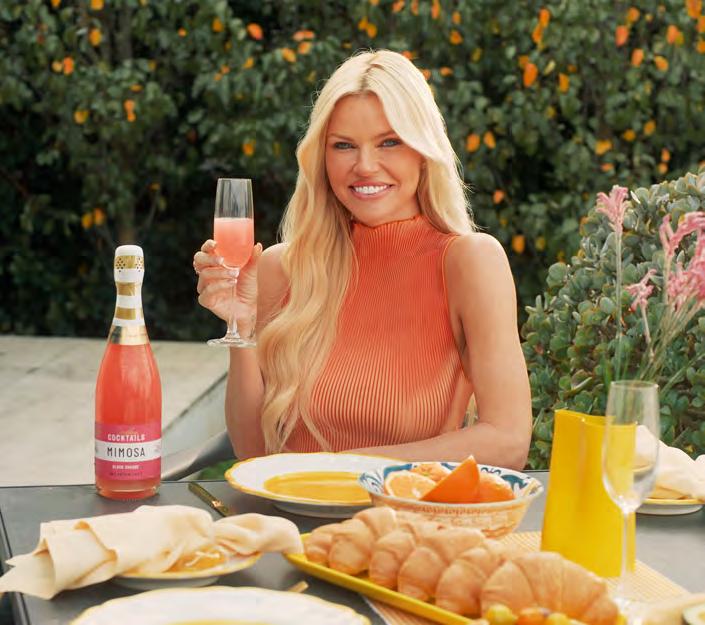

[yellow tail]
SPARKLING
COCKTAILS –WILD PEACH BELLINI
Sweet and juicy, with lifted aromas of white peach and a delicate floral undertone
ABV: 10.5%

[yellow tail]
SPARKLING COCKTAILS –BLOOD ORANGE MIMOSA
Vibrant and fresh, bursting with zesty orange flavour
ABV: 10.5%
A Drinks Trade Promotion 36 drinks trade
strong example of a company that has all three in abundance is Howler Head, a new entrant to the category. The unique banana flavoured Bourbon Whiskey RTD appeals to the experimentation and playfulness consumers have come to expect from the category, and its recent signing of Middleweight Champion Robert Whittaker as Global Brand Ambassador is a perfect example of the industry’s propensity to unique and innovative marketing strategies… what better way to market a product than to partner with the UFC, one of the most popular sports franchises on the planet!.
The Australian MMA superstar has joined Team Howler Head following his recent UFC 298 victory in the Octagon. Whittaker will serve as a global brand ambassador and will represent the brand in marketing campaigns, consumer meet and greets, retail appearances, exclusive event activations and through social media content on Howler Head’s, the UFC’s, and his personal channels, which reaches a combined total of almost 250 million followers.
“Robert became the first Australian UFC titleholder in 2017 as the Middleweight Champion and has continued to find great success inside the Octagon with his well-rounded MMA skills and devastating strikes,” said Dana White, UFC President and Howler Head Co-Founder. “His popularity down under and globally will help elevate Howler Head to higher heights and reinforce the brand’s close association with UFC.”

PRODUCT FOCUS
HOWLER HEAD

Howler Head & Cola
It’s made with the good stuff –Straight Bourbon Whiskey aged for two years in American oak barrels toasted with an aggressive #4 alligator char. It is then blended with natural banana flavour for a smooth kick of bananarama goodness. Finally we top it up with our refreshing cola. One taste and you will know we aren’t monkeying around!
Product Description
• Tasting notes: A deliciously refreshing drink with toasted caramel and toffee notes, complemented with aromatic, creamy, ripe natural banana flavour
• Colour: Rich Dark Mahogany
• Palate: Smooth and rounded with a clean finish
• Aroma: Oak and Banana
• Serving Suggestion: Enjoy icy cold or on the rocks
• Food Match: Smokey maple bbq wings with mustard sour cream dipping sauce
About Howler Head
• Original straight bourbon whiskey blended with natural banana flavour carefully aged in American White Oak barrels for two years.
• Our Straight Bourbon Whiskey has just the right balance of toasted oak, spicy rye, and sweet brown notes, and is complemented with aromatic, creamy, ripe banana flavour.
• Howler Head is winning with LDA Gen Z consumers in the US through captivating digital marketing campaigns, amassing more Instagram followers than top flavoured whiskey brands in the market.
• Howler Head is the fastest growing Instagram account in the global spirits industry in 2024 (YTD).
• Howler Head received a 95 ‘Best Buy’ rating from The Wine Enthusiast. Our 3rd award and certainly one to celebrate as we are the highest rated flavored bourbon.
Industry Stats
• RTD expected to grow by 4% this year.
• Glass Flavoured Whisky grew $ by 11% (MAT to 21/1/24) and is the fastest growing glass segment across Dark and White.
Howler Head is distributed by the Campari Group in Australia.
RTD’s drinks trade 37
Cognac and Brandy
COGNAC AND BRANDY –Australia Calling
ANYONE IN THE INDUSTRY, OR JUST A FAN OF TOP-QUALITY SPIRITS, KNOWS VERY WELL THAT AUSTRALIA MAKES SOME STUNNING BRANDIES, WONDERFULLY COMPLEX, ENDLESSLY EXCITING. EVEN MORE SO, COGNAC HAS BEEN ONE OF THE WORLD’S GREAT SPIRITS FOR MANY, MANY DECADES. AUSTRALIA, IN SOME EYES, EVEN HOLDS AN ADVANTAGE. WE ARE NOT HELD HOSTAGE TO THE ENDLESS REGULATIONS THAT BEDEVIL MAKERS OF COGNAC. OTHERS MIGHT SAY THAT IT IS THOSE VERY REGULATIONS WHICH HAVE SEEN COGNAC RISE TO ITS POSITION OF PROMINENCE. THINK OF REMY MARTIN, HENNESSEY, HINE, MARTELL, COURVOISIER, DELAMAIN, CAMUS AND MORE. EITHER WAY, THIS IS A SECTOR OF THE MARKET OFFERING GREAT DRINKING FOR SPIRITS LOVERS.
By Ken Gargett
However, it is no secret that the international market for Cognac has seen troubled times of late. The pandemic obviously impacted badly. Now, inflation and what analysts refer to as ‘changing tastes’, are seeing ‘consumer resistance’. There is a huge oversupply of products in the USA, which the houses must work through, and shipments to China have been reduced to balance this. Analysts have pointed out that sales of Cognac in the third quarter last year dropped a whopping 23.5%. Producers also face the threat by China of tariff sanctions brought on by trade disputes. One only needs to look to the Australian wine industry to see how that can impact. The future for Cognac sales around the globe, for the short term at least, is not a rosy one.
Sure, high-end casinos and restaurants have interest for their deep-pocketed customers and clients, but that seems more

like status quo with the famous names and big brands in demand, as they always have been, along with ultra-luxury and prestige releases.
Are we seeing a surge of interest from younger drinkers, keen to explore the
brandy market, fascinated to find out what those great Cognacs are like, looking to match them with food or perhaps even a cigar? If so, I saw scant evidence of it. Obviously, with the quality of brandies and Cognacs available, this is a shame.
C M Y CM MY CY CMY K
38 drinks trade
“Chateau Tanunda Brandy is Australia’s oldest, born in the heart of the Barossa Valley in 1890. When you think of iconic Australian liquor brands Chateau Tanunda Brandy Is right up there with the best. Favoured by King George the 5th and sent off to war with our troops back in 1914”
- Rob Hirst
So, why the apparent lack of excitement over these products at the moment? Surely
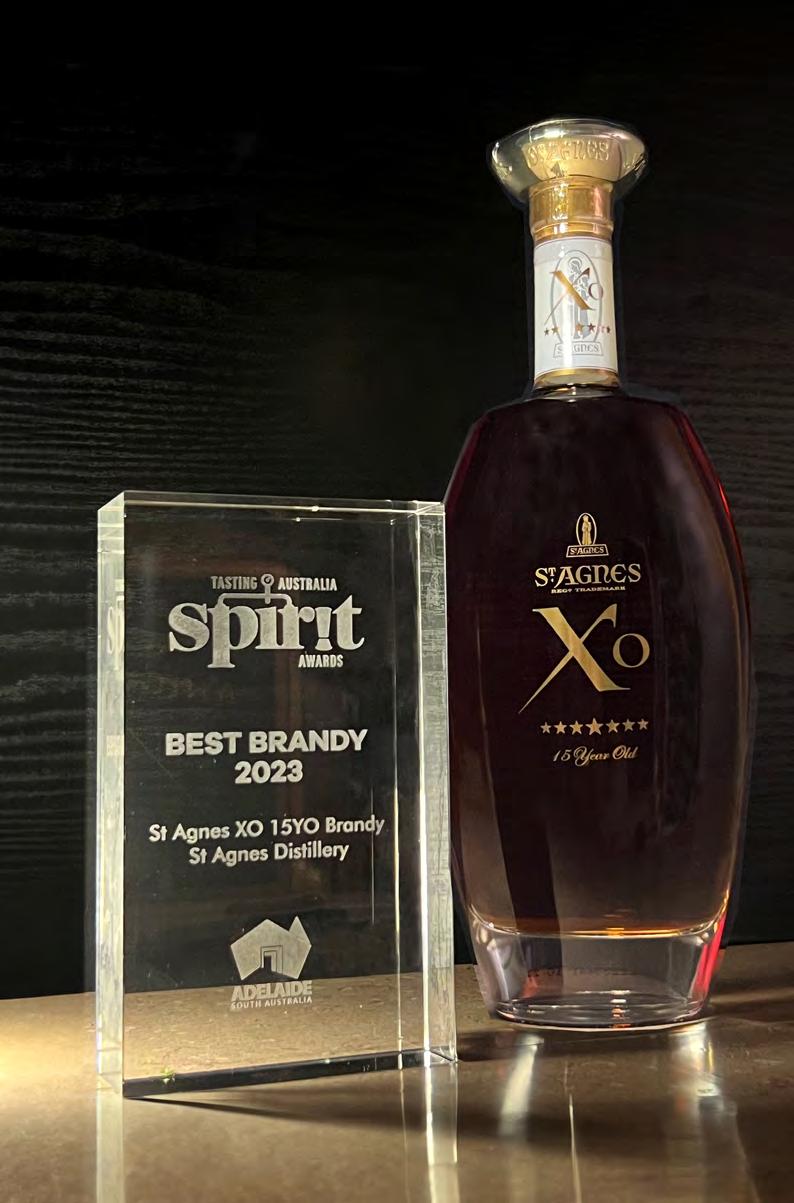



NOW

Needless to say, there are exceptions. Matt Redin from St Agnes notes growth across a “broad cross section of consumers and the market, and it is being spearheaded in the On Premise with our VS brandy in 10% growth territory”. Growth has not been quite as robust for the St Agnes XO’s, but that is simply a matter of supply constraints and will be rectified. The off-premise growth is led by the St Agnes VSOP, currently at around 5% plus, driven by consumers trading up for that “at home” experience. The team behind St Agnes has been “actively encouraging more and more bartenders to experiment with St Agnes and brandy in their mixed drinks and this is definitely having an effect”.
Just as wineries see the benefit of having wine lovers visit their operations and vineyards and taste on site, so too have St Agnes, having instrumented a “solid push
in getting people to visit the distillery and experience exactly what goes into every bottle”. This is especially so after the floods that surrounded the distillery last year.
Redin notes that the majority of the visitors do tend to be older couples, “but we also get younger consumers and families coming through in decent numbers”. He finds that the number of barrels housed in the distillery particularly impresses the visitors.
So, how can this translate to the next generation? Redin notes that “younger consumers in particular are more interested in where their products come from and their provenance”, and “once they see the care and attention that goes into St Agnes, and the fact it is still crafted in the same copper pot stills from 100 years ago and stored in small barrels they are hooked.” Of course, this will only ever account for a very small
percentage of drinkers so much more work needs to be done by the industry.
Redin is encouraged by the export interest they are experiencing, “with shipments going to the UK, Canada, New Zealand, Taiwan and of course China – many of these we have had to put on allocation for our older spirits, if only we had had the hindsight and laid down more stocks 20 years ago as there is definitely growing demand in these markets.” Of course, easy to say that now, but a very tough decision back then.
Another way to generate interest is show circuit success. The St Agnes XO 15-YearOld, for example, has won four Trophies and six Gold Medals in the last twelve months. Consumers do take notice.
While the distillery commenced operations in 1910, next year sees the 100th anniversary of the St Agnes brand, so expect
and Brandy 40 drinks trade
Cognac
not only new products but a real push to increase current sales and expand the market. Included will be what they believe to be the oldest ever spirit released in this country. Named XXO, it has spent more than five decades in barrel. One to watch for.
Another of the iconic brands out of South Australia is Chateau Tanunda, born from the famous building of the same name in the Barossa. Chateau Tanunda has been under the stewardship of the same family for over a hundred years, now headed by Rob Hirst, managing director of Tucker Seabrook.
Hirst recognises the responsibility of caring for one of Australia’s iconic brands, “Chateau Tanunda Brandy is Australia’s oldest, born in the heart of the Barossa Valley in 1890. When you think of iconic
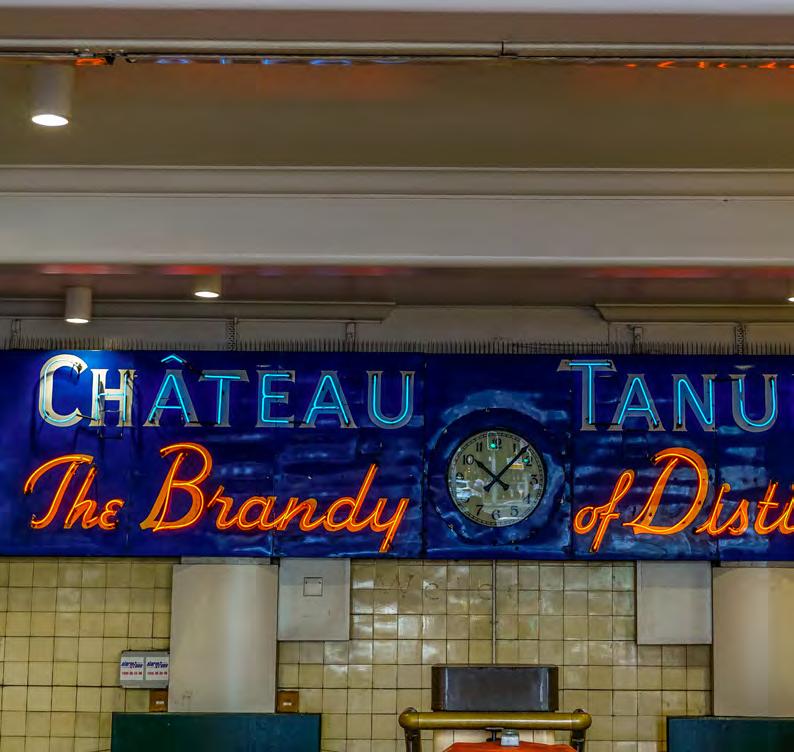
IBA ARE REWARDING THEIR SHOPPERS THROUGH VALUE
Across Cellarbrations, The Bottle-O and IGA Liquor in February, shoppers had the chance to win both aspirational prizes and daily prizes, with thousands of gift cards driving shoppers back into store.
Hundreds of thousands of dollars’ worth of prizes were up for grabs with a trip to the Kentucky Derby, a getaway to the San Francisco SailGP, 2 Ultimate James Squire Dining Experiences, and so much more.
IBA are proud to have presented three industry leading value campaigns to truly reward shoppers and create sustainable growth for suppliers and retailers.


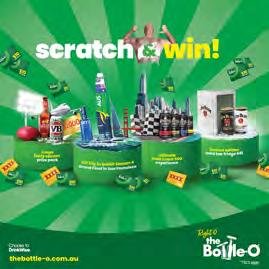

drinks trade 41
Cognac and Brandy
Australian liquor brands Chateau Tanunda Brandy Is right up there with the best. Favoured by King George the 5th and sent off to war with our troops back in 1914, Chateau Tanunda Brandy is aged for five years and ready to be rediscovered by a new generation”.
“Chateau Tanunda Brandy has an enviable reputation and a loyal following of discerning consumers who are looking for the 700ml, the 375ml and the 150ml formats. We’ve found that where there is a wide range of distribution our loyal customers recognise and continue to support brandy”, continued Hirst.
If we turn our attention to the south, to Tasmania, many spirit lovers will be familiar with the name, Sullivans Cove. They may not be so familiar with their brandies, as they are better known for their whiskies. One could say that this represents the future – the focus on whisky (or gin) and spirits like brandy play little more than a cameo role, but certain distilleries are taking them much more seriously than that, with Sullivans Cove a case in point.
The first spirit I ever tried from Sullivans Cove was a brandy and it blew me away, so I am a long term fan. They make their brandies in the same manner as they do their whiskies, “single cask, and with Tasmanian ingredients”. The process for the decision as to when to bottle remains the same – “track that maturation very closely, taking cues from the seasons and using our olfactory senses to determine when they have reached their individual peak, some casks are tasted over 30 times before being bottled.”
They use an Alembic pot still, modelled on the Charentais Alembics of Charentais, France. Add to that the understanding of the operations that Distillery Manager, Heather Tillott, brought with her wine industry background. Sullivans Cove too,

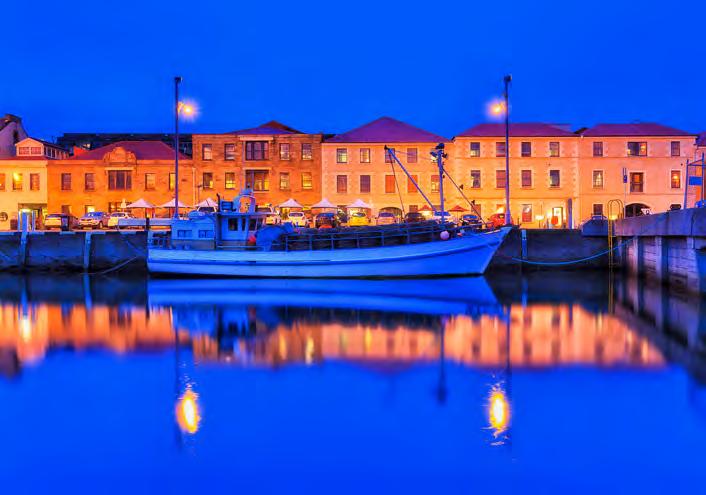
has attracted attention by way of success on the show circuit, with one of their brandies, their TDB0008, a single cask, single varietal Chardonnay grape brandy, taking out World’s Best Brandy at the World Brandies Awards in 2021.
It is worth drawing attention to these two producers to show that the apparent disinterest in the sector is not terminal and hope for the category exists (yes, I know, I must be new).
Of course, there is always the opportunity to improvise and innovate. Just look to the example of Tamworth Distilling in New Hampshire in the USA. Their founder was enjoying a glass of his product one afternoon, watching fly fishermen plying their craft out back of the distillery. Next thing, inspiration struck and now the world has a trout-flavoured brandy, containing actual trout roe. Who knows where distillers in Australia could take us?
42 drinks trade

drinks trade 43
EzTenda Australia –Shaking Up Drinks Tenders
THE DRINKS INDUSTRY NOW HAS AN INNOVATIVE NEW WAY FOR VENUES AND BRANDS TO SECURE DRINKS LISTINGS WITH THE ARRIVAL OF EZTENDA, AUSTRALIA’S FIRST B2B DRINKS TENDERING DIGITAL MARKETPLACE.
Following a successful launch in the UK that saw over 2000 venues and some of the biggest and best brands join the platform, EzTenda is set to transform the traditional tendering process and bring it into the digital age. EzTenda aims to enhance the established tender and bidding model within the drinks and hospitality industry, offering unparalleled whole-of-market access for venues and brands.
Through its innovative platform, venues can easily and efficiently post tenders in minutes, and brands have an open and fair opportunity to competitively bid for listings. EzTenda is more than just a marketplace; it is a catalyst for business growth and opportunity.
Pete Jenkins, Director of Saga Group, said “EzTenda will make the tendering process so much more efficient as it keeps all offers in one place and allows us to focus on all categories of the business. EzTenda can help us connect with brands, new and old, and make sure we get the right ones that will suit our venues”
With a focus on supporting brands at every stage of their journey, EzTenda represents an opportunity to reach new venues, increase distributions, secure new brand activations, and form new partnerships. For venues, EzTenda provides an opportunity to boost profitability and elevate offerings. With access to increased brand support and a diverse range of products, venues can secure tailored deals that align with their unique requirements.
“We’ve helped over 2000 venues tender through the platform in the UK. On average
the platform drives 11% premiumisation on like for like categories and saves buyers 80 hours per year,” said Ian Mason, General Manager EzTenda Australia and New Zealand.
EzTenda further facilitates seamless connectivity between venues and brands through its intuitive in-platform messaging system, allowing for real-time communication, feedback and ratings on bids, thereby strengthening the offers.
Part of the tendering process also allows venues to request access to brand support, including discounts, sample stock, free stock, POS materials, and merchandise.
The decision to introduce EzTenda to Australia was influenced by the country’s vast geographical expanse, which presents unique challenges and opportunities. Despite the complexities, Australia is home to a vibrant on-trade, characterised by world-class venues eager to embrace innovation.
EzTenda aims to address these challenges by facilitating connectivity between brands, venues, and wholesalers across Australia, contributing to sustained industry growth.
Fuelled by a passion for innovation and excellence, EzTenda was developed by a team of liquor industry veterans. Leading the Australian business is Ian Mason, whose long-spanning career includes time spent at Brown Forman, Pernod Ricard, and Sazerac.



To explore the EzTenda platform, you can book a demo or sign up at www.eztenda. com
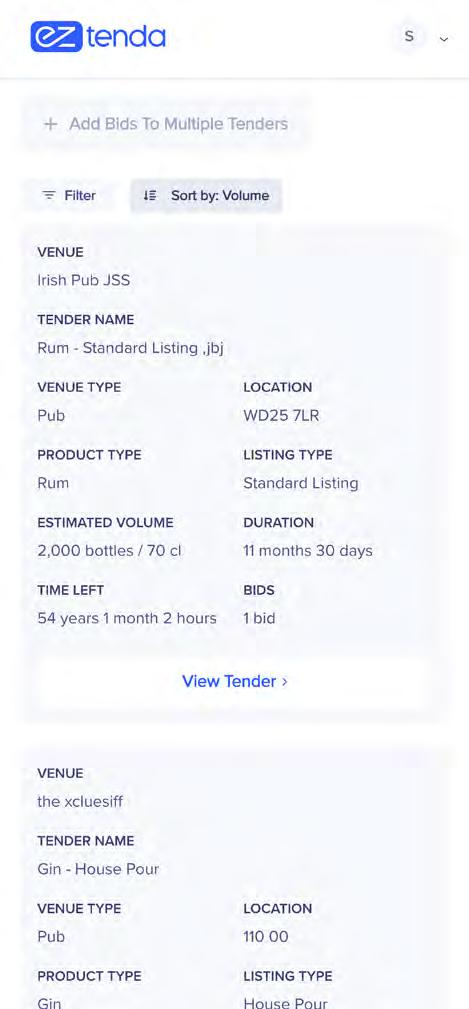
brands are currently saving on average £2000 per month versus traditional sales methods”
- Ian Mason, General Manager, EzTenda Australia and New Zealand
Digital Marketplace
44 drinks trade

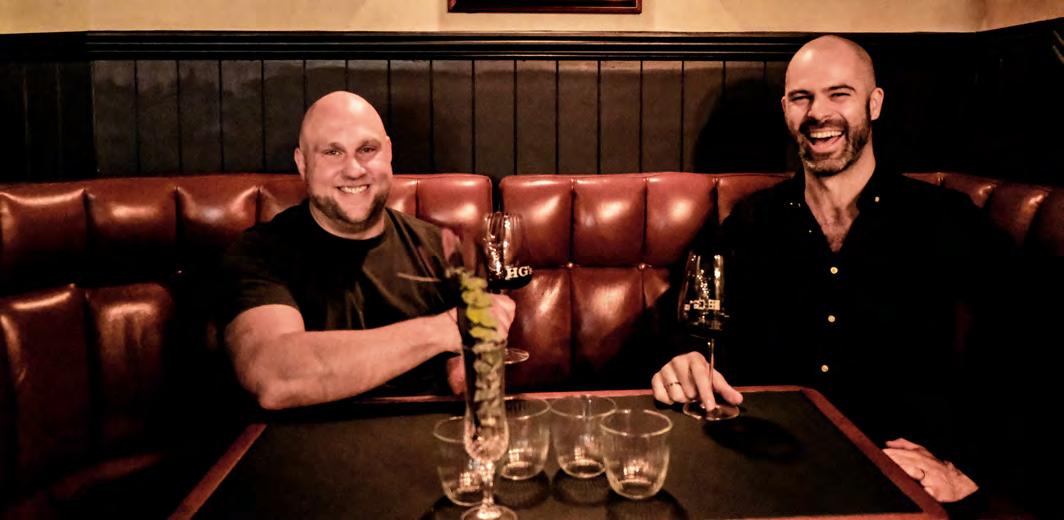

Drinks Trade: What motivated you to bring this platform to Australia?
Has to be the weather – it’s a lot better here than in England! In all seriousness, the real motivation behind bringing EzTenda to Australia was to provide a solutions-focused platform that connects brands and venues in one place, making it easy and efficient to secure drinks listings and create new business.
DT: What are the key factors that have contributed to the success of EzTenda, both internally within the company and externally with
The platform was created to address a genuine need in the industry. Our founder, Sam, had his own brand and encountered difficulties connecting with On Trade venues, which motivated him to seek a better, more digitally forward
The key factors behind EzTenda’s success are addressing a genuine need in the market, industry knowledge, and efficiency in building relationships.
The team behind EzTenda all have backgrounds in the industry, which helps them understand the unique challenges venues and brands face.
Providing whole of market access offers continued opportunities for business growth and success.
DT: What role do you envision EzTenda playing in shaping the future of the drinks industry in Australia, and what impact do you hope it will have?
Our vision for EzTenda is to become the future of how venues and brands conduct business in the drinks industry.
By providing whole-market access for venues and brands, we aim to facilitate more efficient and transparent transactions that benefit everyone involved.
DT: Looking ahead, what are your plans and goals for the future growth and development of EzTenda?
Australia is the first international market to go live outside of the UK. Which is bloody exciting.
Spain will be hot on our heels going live in April. It’s an exciting time for EzTenda.
DT: Can you share any success stories since its launch, either in the UK or Australia?
We are only just getting started in Australia, but we have our first tenders live and already have key brand owners committed to the platform and bidding.
The platform is going from strength to strength in the UK, with over 2k venues benefitting from tendering through Eztenda.
DT: Even though you’re still operating in the liquor industry, how have you found the transition into tech?
Well, besides wearing a T-shirt to work now, I’m still operating in the industry I love and coming back to Australia and reconnecting with old colleagues (and new) has been such an enjoyable part of the processdespite being in tech, relationships are still key, and that won’t ever change.
Ian Mason – General Manager, EzTenda Australia and New Zealand
Peter Jenkins - Director, Saga Group
drinks trade 45
Saga's latest venue, Henry G's, Manly
Appleton
Estate
WELCOME TO THE BEAUTIFUL APPLETON ESTATE: A FERTILE LAND NESTLED IN THE LUSH NASSAU VALLEY, HIDDEN DEEP IN THE HEART OF JAMAICA… ALL APPLETON ESTATE RUMS ARE STEEPED IN THE RAW BEAUTY AND HISTORY OF THE COUNTRY THAT CREATED THEM.
Appleton Estate is Jamaica’s oldest sugar estate and distillery in continuous production and covers an incredible 4,614 hectares. Whilst its rum production dates back to 1749, the origins of the Estate itself can be traced to 1655 when the English captured Jamaica from the Spaniards. It is believed that one of these Englishmen was Frances Dickinson, whose grandsons Caleb and Ezekiel are the earliest known owners of Appleton Estate. The Estate was made as a land grant to Frances as a reward for his services.
Appleton Estate Jamaica Rums are unique in the spirit world. Every one of Appleton Estate’s rums is produced in a single estate in a small, circumscribed geographic area – making Appleton one of the few rums in the world that can claim terroir, a wine production term that describes the unique flavour a specific location gives to a product. Appleton is the only rum in the world with a terroir as unique as the picturesque Nassau within the famed Cockpit Country in the heart of Jamaica, the valley’s unique landscape of rugged terrain is home to a rich ecosystem
like no other place on earth.
The rums produced at the Appleton Estate distillery showcase its climate and geography. While there are many varieties of sugarcane – which, when coupled with regional growing conditions, have a significant effect on final taste and aroma profiles – the sugarcane used in all Appleton Estate rums is grown and processed in the unique microclimate of the Nassau Valley, producing rums that have fruity and buttery notes.
Similarly, the spring water used by the distillery has been filtered by nature,

Iconic Brands
46 drinks trade
Appleton Estate is the only rum in the world with a terroir as unique as the picturesque Nassau Valley.
percolating for miles through the limestone hills of Cockpit Country on its way to Appleton’s springs, a journey that imparts softness and a slightly sweet taste.
At Appleton Estate, the production of rum is approached as an art form. Much like the brandies of Cognac and the single malts of Scotland, every step of the process is carefully monitored to increase control over the final product. This is a process that unites science, past-experience and art, and is one that the distillers at Appleton Estate understand best.
For over two centuries, they have cultivated the raw ingredients that go into making each barrel of rum, adding the warmth and unique spirit of Jamaica to every drop.
Adding to the distinctiveness of Appleton Estate Rum, the fermentation process utilises a specific yeast that was both developed and propagated on the Estate before being passed down through generations of distillers – and kept under lock and key to preserve its individuality.
The Appleton Estate Rum distillation process applies both the traditional small batch copper pot distillation method –which has been handed down since the inception of rum making in Jamaica – along with the more modern column still method. The pot stills at Appleton are unique to the Estate and provide the rums with their unique character along with the orange-peel top note that is the hallmark of the brand.
All of Appleton’s rums are aged in first select American oak barrels to add complexity and flavour to the final product. The Jamaican climate also triggers the phenomenon known as Tropical Ageing;
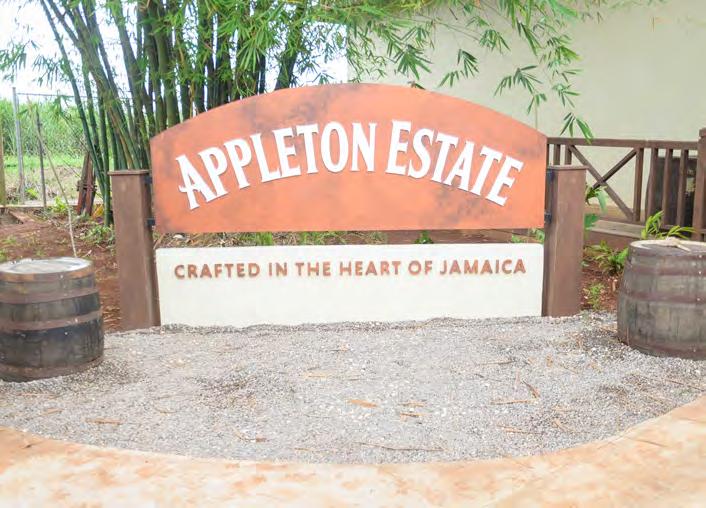

consequently, a rum aged for one year in Jamaica has the characteristics of a spirit that has been aged for two or three years in a cooler climate. The higher daytime temperatures result in greater expansion of the rum, meaning that it moves further into the pores of the wood. Conversely, the night time temperature drop contracts the rum, drawing the good extractives, such as cellulose, tannins and flavonoids, out of the wood.
The final secret of Appleton Estate’s exceptional spirits is the blending – a combination of science, art, love and passion
that achieves rums with such complexity. Blending is an art form and Master Blender Joy Spence – the first woman in the world to be appointed to the role – uses many different types, styles and ages of rum, known as marques, to add complexity and richness to the final product.
After the marques are blended together, they are left to rest for an extensive period of time to allow the different rums to marry. This marrying process allows the character, flavour and bouquet of the rums to fuse together, resulting in a fuller and more rounded product.
drinks trade 47
TASTING NOTES
Appleton Estate Signature Single Estate Jamaica Rum
Beautiful harvest gold and amber colour, with remarkable clarity and brilliance. Dried apricot aromas and fresh peach with hints of molasses.

Appleton Estate 8 Year Old Reserve
Shows brilliant honeyed bronze colour with a subtle green ring of ageing. Spicy fruit aromas, hints of honey, vanilla, holiday spice and orange peel notes.

Appleton Estate 12 Year Old Rare Casks
Deep bronze with a honey gold ring of age and mahogany reflections. Toasted oak, druid fruit, hazelnut, dark cocoa, molasses, orange peel, vanilla and hints of coffee.

Appleton Estate 15 Year Old Black River Casks
Copper hue appearance with a honey gold ring of age. The beautiful colours developed over a minimum of 15 years of ageing in the tropics. Aromas of toasted almond and hazelnut, followed by notes of orange peel, vanilla and hints of roasted coffee and molasses.
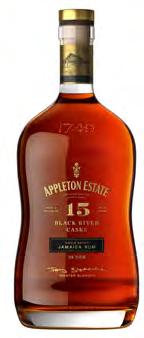
When complete, extensive nosing, tasting, and quality checks are again carried out to ensure that the blend meets the company’s high-quality standards – Spence is dedicated to the task. Once she is confident that each rum meets the quality standards, the Master Blender certifies the blend for bottling.
THE WORLD’S FIRST FEMALE MASTER BLENDER:
Joy Spence
Appleton Estate’s Master Blender Joy Spence has the distinction of being the first woman to hold the position of Master Blender in the industry. Spence’s passion for the art of creating rum was inspired by her predecessor and mentor, Owen Tulloch, whom she took over from in 1997.
After falling in love with chemistry at age 13, Spence pursued her passion with vigour – her final exam scores for her Master of Science in Analytical Chemistry at the University of Loughborough were the highest ever achieved by a student at Loughborough, a record that still stands today.
After lecturing at the university level and in the private sector, Spence found herself working closely with then Master Blender Tulloch, sparking a passion for the art of creating rum. Under expert guidance, Joy extended her knowledge of the science of the rum-making process and her artistic appreciation of the spirit.
According to Spence, creating rum provides her with the perfect balance of art and science. In fact, Spence maintains that, in rum making, the two are so intricately intertwined that it is difficult to pinpoint
DISTRIBUTOR
Appleton Estate Rum available via Paramount Liquor
www.paramountliquor.com.au and Australian Liquor Marketers (ALM) www. almliquor.com.au
48 drinks trade
where the science stops and the art begins. And her passion for rum is unbounded.
“There are so many different expressions of rums that you can find worldwide,” she says. “And what makes it so unique is that they are produced in very romantic and historic places with different cultures and so you experience a different feel when drinking the spirit, you actually get the warmth of the area and the exoticness of where it’s produced.”
Spence’s passion for rum reflects that of the team she works with at Appleton Estate and the wider Jamaican community. “Our people are so passionate about our industry,” she says. “All of our workers have been working for a very, very long time. For example, I’ve been working for over 40 years. It grows on you; you fall in love with the spirit and… we’ll go the extra mile to ensure consistency and quality. It is difficult to put a Jamaican down and as you can see that when we put our heads to it we are number one… in Jamaica we say ‘Wi likkle but wi Tallawah’, meaning even though we are a small nation, we’re strong willed, determined and refuse to be restrained by the boundaries of our small island.
In 2005, Spence was honoured by the Government of Jamaica, who awarded her the Order of Distinction in the Rank of Officer (OD) in recognition of service and outstanding contribution to the spirits industry.
In 2014, Spence received an honorary Doctorate of Science degree from the University of Loughborough in recognition of her contribution to the industry and the advancement of women in the field. Spence was presented with the Outstanding Contribution Award at the 2014 International Spirits Challenge in London 2014.
In 2017, Spence was again honoured by the Government of Jamaica, which awarded her the Order of Distinction in the Rank of Commander (CD) in recognition of her contribution to the promotion of Jamaica's rum industry and Brand Jamaica globally. In 2018, Spence was the first female to be honored with the Jamaica Prime Minister Medal for Science and Technology and most recently received the Jamaica Musgrave Gold Medal for Science (2023). This is a brief overview of Spence's accomplishments. Below are the accolades received to date.

ACCOLADES
2005: Government of Jamaica - “Order of Distinction” Rank of Officer, (OD); in recognition of service and outstanding contribution to the spirits industry
2011: Spence received the Golden Rum Barrel Pioneer's Award for outstanding rum achievement
2014: Honoured by the International Spirits Challenge with the 'Outstanding Contribution' Award
2014: University of Loughborough UK- Honorary Doctor of Science
2014: University of the West Indies - Honorary Doctor of Laws
2016: Received the Golden Rum Barrel Award for the Most Influential Rum Blender of the Last 10 Years
2017: Government of Jamaica- “Order of Distinction” Rank of Commander (CD) in recognition of her contribution to the promotion of Jamaica's rum industry and Brand Jamaica, globally
2017: Tales of the cocktails Grand Dame Award as most influential female in the Spirits Industry
2017: “Food & Wine Magazine”, in partnership with sister publication, “Fortune Magazine” named her in the top 20 'Most Influential Women in Food & Drink'
2018: First female to be Honored with the Jamaica Prime Minister Medal for Science and Technology
2022: Recipient of the DISCUS Lifetime Achievement Award
2023: Jamaica Musgrave Gold Medal for Science
drinks trade 49
DECISIVENESS AND AGILITYthe secret and completely free weapons to winning the war for talent, or at least the next battle.
IN THE FIRST OF OUR SPECIALIST RECRUITMENT COLUMNS FOR 2024, DRINKS TRADE APPROACHED STEVE WARD FROM CORE ELEMENT EXECUTIVE RECRUITMENT PARTNERS TO ASK THE QUESTION: “WHAT DO BUSINESSES NEED TO CONSIDER WHEN SUCCESSFULLY UNDERTAKING A RECRUITMENT SEARCH IN A MARKET THAT HAS RAPIDLY EVOLVED OVER THE LAST FEW YEARS?” IT’S A BROAD QUESTION, BEST APPROACHED IN PARTS.
STEVE WARD
I’ve been in executive recruitment and search since 2011. Much has changed, most notably the rise of direct recruitment enabled by the game changer that is LinkedIn. AI is a ‘watch this space’. The one reality that remains unchanged is of course the ‘great war’, the war for talent. It’s been raging for years and all of us combatants and warring nations aren’t about to lay down arms anytime soon. With the compounding (and slightly perplexing) effect of a buoyant employment market amidst some challenging trading conditions and inflationary environment, employers are more desperate than ever to catch the prized, elusive rhinestone encrusted horn unicorn and get one up on the competitive set. Sound familiar?
This article isn’t about the delicate art of how to catch a unicorn (that’s where good head-hunters earn their dough) but I will cheerfully celebrate and shine light on two employer behaviours that if exhibited throughout the hiring process, consistently win hearts and minds of candidates and,
you guessed it, result in them far more likely to join your organisation and not your competitor.
INTRODUCING:
Decisiveness. The ability to make a decision quickly and effectively. Agility. Able to move quickly and easily.
I’m sure most organisations would agree, having these two power nouns as prevailing or indeed aspirational organisational cultural hallmarks make sense in the cut and thrust of fast-moving consumer goods. An agile and decisiveness culture (or lack thereof) is on show the minute a hiring process begins. When celebrating an employer who walks their own talk in this area, we find ourselves anchoring back to a subtle yet powerful narrative: “the way a business conducts itself via a hiring process gives you great insight into the decision making ethos of that business.” If a process drags on, has too many steps or inputs or if the decision makers are not aligned and can’t decide, candidate engagement flames out and a quicker business wins, stealing your unicorn.

If we accept that recruitment is largely homogenous and service delivery is everything, achieving cut though hinges on an exceptional candidate/talent experience from the very first exchange. But what happens next as the hiring process gets underway is equally critical in either galvanising or killing candidate engagement. Make a call based on enough inputs and hire someone; someone else will.
Recruitment
50 drinks trade
IBA – Rewarding their shoppers through value
Seeking out value has become a crucial part of the shopping equation. This is especially true at the moment, with Aussies continuing to feel the pinch from high cost of living, and renters and mortgage holders alike looking at their budgets. According to the latest Circana & Growth Scope data, a huge 93% of Australians are worried about the impact of inflation, and 56% of shoppers are comfortable changing stores to seek value.
In response, Independent Brands Australia (IBA) launched its value campaign in August 2023 with Cellarbrations “Spin To Win,” and The Bottle-O “Scratch And Win.” With joy and fun at its core, the interactive gamification of these campaigns allowed IBA to partner with valued suppliers through prizes which included an escape to the luxurious Orpheus Island lodge, the ultimate grand final experience and more.
With 823 stores taking part, the campaign was delivered in full, throughthe-line, with 23 million impressions being served across a six-week period. It drove 260,000 click-throughs to the site, and 200,000 plays across both Spin To Win & Scratch And Win, with punters playing an average of four times. Cellarbrations and The Bottle-O both experienced strong growth when compared to the market, with the campaign a success for both retailers and suppliers.
“We are seeing shifts in consumer behaviour; we know price, promotions and value for money are more important than ever before. We have seen growth in value, mid-strength, and mainstream categories, as well as pack formats that represent the best value for money,” said Craig Payens, National Retail Merchandise Manager, IBA.
“Being able to reward shoppers whilst leveraging our everyday low-price programs



and insights around price elasticity has proven to be a successful strategy for our retailers and for supplier partners.”
Value is a key part of IBA’s strategy. Following its initial success, the campaign ran for a scond time in February 2024, this time including IGA Liquor “Wipe To Win”.
“The second time around has been even bigger, we had more suppliers partnering with the program and the shopper engagement statistics are tracking at a 100% increase on August.” said IBA Marketing Manager Bianca Hopkins.
“Adding IGA Liquor to the mix has meant we have had six weeks of brand presence through the line and across over 1,000 stores.”
Across the three banners in February, shoppers had the chance to win both aspirational prizes but also daily and weekly frequency prizes, with thousands of gift cards driving shoppers back into store. Hundreds of thousands of dollars’ worth of prizes were also up for grabs, including a trip to the Kentucky Derby, a getaway to the San Francisco SailGP, two Ultimate James Squire Dining Experiences, and so much more.
Value will continue to be a high priority for shoppers this year and IBA is proud to have presented three industry-leading campaigns that truly reward shoppers and set up our suppliers and retailers for success.
*Circana & Growth Scope: Liquor Market Moves 2023
Circana Shopper panel report 19, Jun 2023
A Drinks Trade Promotion drinks trade 51
Making rum requires technical skill, deep pockets and plenty of patience.
IN THE WORLD OF SPIRITS, FEW CONCOCTIONS CARRY THE RICH HISTORY AND DIVERSE FLAVOURS OF RUM. THE JOURNEY FROM CANE JUICE TO CASK-AGED PERFECTION IS BOTH AN INTRICATE PROCESS AND A NUANCED ART, ENCOMPASSING THE CULTIVATION OF SUGAR CANE, THE ALCHEMICAL MAGIC OF FERMENTATION, THE TRANSFORMATIVE POWER OF DISTILLATION, AND THE PATIENCE IN THE EMBRACE OF OAK BARRELS.
IN THIS EXPLORATION, WE VENTURE INTO THE HEART OF RUM-MAKING, UNRAVELLING THE COMPLEXITIES THAT GIVE RISE TO THE DIVERSE SPECTRUM OF WHITE, GOLD, AND DARK RUMS.

Exploring Spirits
52 drinks trade
Leave a dish of cane juice or diluted molasses in the open air and things will start to happen almost immediately: first, wild yeast will settle on the dish and begin the process of reproduction before they convert the sugar to alcohol. If left for a few days, subject to climate and yeast type, the liquid could be up to 3% alcohol by volume at this stage. The yeasts will secrete some unpleasant esters and by-products. Continue the process by vaporising it repeatedly in a kettle to capture the alcoholic vapours before the water begins to boil, and you’ll be left with cane spirit. If you’re patient, you can put this spirit in a cask for at least two years and you’ll have yourself some homemade rum.
Rest assured it won’t be enjoyable rum, and drinking it could make you very, very sick, or even kill you. Making rum may appear to be a relatively simple process, but making a good, potable rum takes a lot of knowledge, money and care.
SUGAR CULTIVATION &REFINING
Sugar cane: Rum begins with sugar cane. Inside these long, grass-like stalks is the sweet cane juice called sucrose. When processed, sucrose becomes the white sugar crystals you buy at the supermarket. Something of a resilient species, sugar cane has acclimatised and hybridised to a wide range of temperatures, disease resistances, soil conditions, varying climates, and rainfalls, harvesting methods and sugar yields.
Even in Australia, growing conditions and different varieties of plant create slightly different flavour components in sugar sap. Typically, canes are cut annually and cane stems are left to ‘reshoot’ as new stalks for 18-24 months. Cut cane must be processed quickly, which prevents deterioration from bacterial infestation that is chronic in tropical climates, so much so that the industry has an old dictum: ‘from kill to mill in 24 hours’. Before milling and juice extraction, the stalks are washed and cut into shorter lengths.
Sugar milling: To extract juice, canes are
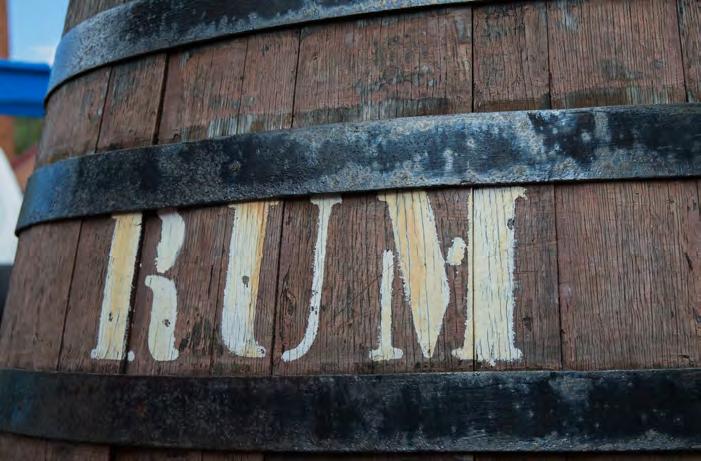
crushed in rollers, and 96% of the sweet liquid is extracted with 10-15% sugar content; at this stage, mostly sucrose, some fructose and glucose are present. Following this, the cane juice is immediately sent to have the sugar extracted, as yeast and bacteria quickly start spreading through the juice. Rum agricole distillers immediately ferment the cane juice, this is a more costly process than fermenting molasses, as the raw material is not being used to extract sugar first, causing it to produce two sources of ‘income’.
Cane juice produces a different distillate that is more floral and fruity because it has not been concentrated and caramelised in a treacly, molasses by-product. In fact, less than 3% of rum is distilled from cane juice due to molasses being much cheaper and more plentiful.
Sugar processing & molasses: In this process, the juice is heated and clarified as it still contains cane fibres from milling, as well as waxes and other soluble impurities. The juice is then heated and lime is added to clarify and remove these impurities. More heat is then applied, allowing the juice to boil down to syrup and repeatedly centrifuged through vacuum evaporators. During this stage, the syrup changes from golden treacle to dark molasses, while the
light brown, unrefined sugar crystals show the presence of some molasses. By the time the product has become molasses, most of the sugar has been liberated and it is not necessary to extract more.
The most desirable molasses is referred to as grade A, as this has the highest concentration of sugars to ferment into alcohol. Most sugar refineries will evaporate and centrifuge a second extraction, or even a third to extract as much of the sugar as commercially possible; each extraction produces grades B, C & even D grade molasses. Some refineries classify the stages as light molasses, dark molasses and ‘backstrap’, when it is no longer viable to continue extracting sugar from the molasses concentrate; at this point the molasses has no further value to the sugar refinery and it is either sold to make rum, or as livestock feed for cattle. It is a little-known fact that molasses can be kept for years without spoiling or any other detrimental effects, meaning it can be shipped and stored for extended periods of time before it is made in to rum. Many Caribbean countries no longer produce sufficient domestic molasses, and import molasses mostly from Brazil, as well as Venezuela and Surinam, this is not surprising as Brazil is the world’s largest sugar producing nation.
drinks trade 53

A Hot tropical climate results in faster flavour extraction from the casks, and high humidity also results in greater evaporation of spirit vapour (ethanol), at about 7-10% compared with cool climate whisky maturation that brings an annual loss of 2% on average.
MAKING MOLASSES & CANE BEER
To start the fermentation process, molasses is diluted in water and made into a ‘wash’, which creates a medium for the introduction of yeast, while the ph level is adjusted to 4.5, allowing the yeast to survive. Yeast can be wild, naturally occurring in the environment, or specifically cultured. Different yeast strains produce different fermentation periods and different flavour profiles. Wild yeasts, of which many have been identified in the Caribbean, tend to take longer to act, and some fermentations last for weeks instead of days. Wild yeast converts the sugar into alcohols and carbon dioxide. Cultivated distiller’s yeasts are developed to tolerate different fermentation temperature ranges, alcoholic yields, speed of fermentation and differing types of flavour profiles that distillers wish to create.
Distiller’s yeast has proven the most popular and manageable of all; over days or weeks, sugars are converted into alcohol, with acids producing in esters, aldehydes and other compounds that are flavour builders for rum. A small amount of secondary bacterial infection will add another set of flavour components to the mix. When the fermentation is finished, the wash will be between 7-10% alcohol by volume, and is also referred to as beer.
White rums seek a short fermentation period of 24-36 hours and therefore produce less esters and flavour congeners to keep the ‘beer’ light and maintain a lower alcohol content of 6-7%ABV. Dark rums will ferment over many days, or even weeks if wild yeast is used. The longer the fermentation, the more esters and bacterial activity will affect the acidity and improve the flavour development while risking spoilage.
MAKING THE SPIRIT
Distillation: Hundreds of flavour compounds called congeners are suspended in the beer, and it now sits at around 8%ABV and 92% water. As we know, alcohol evaporates before water and it is crucial to reach the correct temperature range of 7278C to liberate the alcohol and the aromatic volatiles in the congeners. There are two types of still used to liberate the spirit: batch pot still and continuous, or column still, methods.
Pot still distillation: More flavoursome rums are made using this method, as it captures more congeners (mostly esters &acids). These flavour volatiles, along with the alcohol, are sent as vapour through an onion-shaped still and across the ‘swan’s neck’ head to be turned back into liquid by a condenser. Pot still distillation involves two distillations: in the first, beer is increased from 8% ABV to ‘low wines’ of about 25% ABV, while the second distillation takes it to between 70-75%ABV. During the second distillation, the heads and tails are cut to ensure the undesirable and dangerous alcohols are removed, and only the desirable flavour congeners or volatiles are captured. The resulting spirit, or distillate, is also called new-make.
While the above is highly effective,
Exploring Spirits
54 drinks trade
there are also numerous hybrid pot still designs that allow vapour to be sent from the initial first pot through a series of retorts or ‘doublers’ to fractionate the spirit at each receiving vessel. This extra distillation step from the connected retorts can raise the distillate to about 85%ABV. Like yeast strains and fermentation processes, every distillery has slightly different still technologies and shapes that give its distillate signature flavours.
Continuous distillation: The continuous method is the industrial workhorse distilling in that it never stops, and produces a finished spirit that can be up to 94.5%ABV. While a batch still may only produce a few thousand litres every charge of 8-10 hours, the continuous still produces an impressive 15,000 litres or more per hour and produces a light, near flavourless and vodka-tasting spirit by continuously stripping the beer of its alcohol through rising steam, and the alcohol evaporates as the wash falls down through a series of plates or trays.
Continuous still technology was introduced to rum production in the second half of the 19th century and led to the development of lighter styles of rum. By the 20th century, the French modified the British Coffey still with their double and triple column stills known as Savalle. Both Bundaberg and Beenleigh distilleries conduct first distillation in a column, followed by pot distillation
MATURING SPIRIT INTO RUM
The product that is discharged from the still is high-proof crystal clear spirit that is hot and fiery to taste, not only due to the burn of ethyl alcohol, but also due to the rawness of the new spirit. Time in wood, or resting the spirit, turns it into a smoother, mellower and more complex tasting rum, even though the alcohol remains quite strong. The term OP, Over Proof, means there’s more alcohol than water in the rum; whereas underproof means more water. Before the spirit is put into large vats or casks to mellow and mature, some are reduced from 7585% ABV to the lower 60s in the hopes of finding the ‘bliss point’ of water and spirit’s solubility in the cask wood.

Maturation: Many distilleries rest spirit in large wooden vats to mellow; white rum can be left in stainless steel tanks, while other distilleries mature in oak casks. Oak is the ideal medium to mature spirit because its porous qualities also impart flavours and allow the contents to breathe, permitting slow oxidation to add more complexity to the resulting spirit. Wood adds between 60-70% of the flavour, especially in big flavoured rums. During this time new esters form, small chain esters escape; tannins and caramelised sugars in the charred or toasted wood add colour and flavour. A hot tropical climate results in faster flavour extraction from the casks, and high humidity also results in greater evaporation of spirit vapour (ethanol), at about 7-10% compared with cool climate whisky maturation that brings an annual loss of 2% on average. This loss is called the ‘angel’s share’. Even barrel filling affects maturation with different headspace and entryproof; for example, Trinidad enter its distillate at 80% ABV, Grenada at 60% with more water solubility, while others are in the mid-80s. Rums have optimum time in casks before over extraction unfavourably affects the flavour, and careful inventory management of selected casks can see ageing well beyond 10 years. Different types of barrels and cask sizes have a significant impact on flavour development; ex-bourbon barrels are the most popular and cheapest, ex-brandy casks are often used in French-style rums, new oak and ex-sherry, wine and port casks are also employed to add flavour variants to expressions.
In Australia, distillers mature in huge
white oak or kauri vats for at least two years and finish premium rums in ex-bourbon, port or other casks to add more flavour complexity.
Blending: Before the rum can be bottled, batches of rum are blended and married together. Dark and gold rums are rarely from a single barrel or from a single year; they are blended from dozens of multiple casks from different years to add depth and, most importantly, consistency of flavour so the consumer finds their favourite brand is always similar year after year. One of the first blended rums was developed by the British navy in 1810 to ensure consistency standards, and rum labels using this recipe today blend five or more different types of rums from different British islands in the Caribbean and Guyana to make naval rum.
The natural colour of rum can vary enormously and is affected by container size, years spent in wood and how many times the wood have been filled with new spirit. It is common practice to add burnt sugar caramel E 150 to colour the rum before bottling. This process ensures a pleasing, consistent colour to the rum each time you venture to the shelf to buy a bottle.
RUM TYPES BY COLOUR
White rum: Also known as light, blanco, plata and silver, this rum is clear in colour. In some countries they are matured in wood for a few months to allow them to mellow, while in others it is stored in stainless steel tanks. To make the rum clear, it is filtered through charcoal filters to remove any colour. The combination of the fast fermentation that produces less congeners, the further rstripping out of remaining congeners through column distillation, and the shorter time in vat make this rum lighter flavoured and near neutral in colour.
Gold rum: Also called amber and oro, molasses-based gold rum often gains much of its yellow copper colour as a result of maturation in wood and is usually medium bodied.
Dark rum: Tending to be richer in flavour, heavy-bodied molasses rums are rested in wood to achieve a more intense maturation of character in flavour and colour.
drinks trade 55
SYDNEY’S HISTORIC Red Mill Rum WITH A TWIST
AN AUSTRALIAN SPIRITS BRAND IS ENJOYING A NEW LEASE OF LIFE AS SIXTH GENERATION WINE AND SPIRITS MERCHANT, DAVID FESQ, REVIVES AN ICONIC SYDNEY LABEL AND A BRAND NEW DISTILLERY IN ROZELLE IN SYDNEY’S INNER-WEST. THIS REVISED RUM, BLENDED FROM SCRATCH COMBINES THE LEGACY OF FAMILY SPIRITS WITH A FRESH NEW IDENTITY AND A LIGHT, DELICATE AND ULTIMATELY INTRIGUING PRODUCT.
Red Mill Rum was born in 1933 and soon became the most popular rum in its category in Sydney. A fixture of Australian pubs, boardrooms and backyards in the post-war years, the brand was retired in the early 1980s after being purchased in a suite of others by multinational businesses.
It is now being revived by David Fesq, Managing Director of Fesq & Company, and the original Red Mill Rum founder’s great-grandson, who is inspired by his family tradition of rum-making and personal experience living and working in the Caribbean.
“Rum is all about having fun. That’s why so many of us love our rum cocktails whilst we are on holiday. I want to bring that holiday feeling to people year round through an exciting revival of what was once Sydney’s most loved and iconic drink” said Fesq.
“I’ve worked with wine and spirits my entire adult life. Whether living in Sydney or for years over in the Caribbean my passion
for good quality rum has always been there. It seems like the time is right to bring this all together with a new generation of Red Mill” he said.
Rather than reproducing the original recipe and vintage labels, Fesq has created something much more contemporary, both inside and out of the bottle. This fresh approach continues through to the spirit itself, with a recipe also evolved from what would have been a heavy molasses based, overproof rum last century, to a more elevated and delicate spirit made from a combination of white and brown sugars.
Fesq, who continues as the head of the family’s wine and spirits business, is also leaning into his deep roots within the wine industry to source an incredible array of unique and interesting barrels that further add to the Red Mill story. These include century-old cognac barrels alongside casks from Bordeaux, Sauterne and cult Australian wine maker Sammy Otis.
Fesq and his team have now taken over
a 1500sqm site in the shadow of the iconic White Bay Power Station, adjacent to the working harbour where Red Mill was made back in the 1930s.
Along for the adventure is spirits expert Garth Foster, who has over fifteen years’ experience activating some of the world’s most loved spirits.
Drinks Trade: What inspired you to revive the Red Mill Rum brand retired in the 1980’s?
David Fesq: It’s funny, my wife jokes that this is actually a Covid lockdown hobby that got out of hand. And whilst there is some truth in that - during that time I did get a chance to delve more deeply into the history of the brand. This has been a dream that has been simmering since many years before.
Will Red Mill Rum slot not the Fesq portfolio?
DF:We really want to encourage customers
Distillery Profile
56 drinks trade
to engage with Red Mill if it suits their processes. There’s so many single barrels and unique blends that are coming online that it will always be best to have access to them first via us directly.
What sort of production volume are you targeting in the first year - and where will your primary distribution be?
DF: We have been lucky enough to have been producing off-site for the past three years or so whilst we get the Rozelle site up and running. This is great as it means we have our Cut Cane Spirit already in the market and our Gold Rum (2.5+ years in oak) presently being released. As we are still such a small operation we are most definitely focussing on Sydney presently and the onpremise at that.
Can you tells us more about the style of rum you are producing, and is it reminiscent to the original Red Mill Rum, or carving its own path?
DF: My great grandfather wanted to create a Rum that was perfect for Sydney at that time – and we’re trying to do that as well. Sydney has no doubt changed in that time, so the style of rum has also changed. It’s a bit finer, lighter, more versatile. George Fesq wouldn’t have been able to access the casks we have in our barrel program - and if he had wouldn’t have been able to justify their investment!
Tell me more about the barrel programme you are using for Red Mill Rum?
DF:What started as a bit of fun - with a vision of creating different flavour profiles, ultimately became an obsession with getting some of the most interesting casks from around the world to age our Rums. Luckily, a lifetime in the wine industry and some very close friends in the business helped us obtain range of great casks, including ex-

I’ve worked with wine and spirits my entire adult life. Whether living in Sydney or for years over in the Caribbean my passion for good quality rum has always been there. It seems like the time is right to bring this all together with a new generation of Red Mill


sauternes, century old Cognac casks, Port pipes, reassembled quarter casks, and gems from cult Australian wine producers.
Garth, what inspired you to get on board with this adventure?
Garth Foster: Three things really… Hearing the brand story and really believing in it. Red Mill and Australian rum in general have a story worth telling people. Secondly, the fact that it’s David’s project – I have so much respect for the guy and seeing the magic he can bring to any project he starts. And thirdly, I’ve always been secret rum guy- and it’s funny the more people I talk to about it the more I hear more people telling me that they are too. They just haven’t had the right product to get behind yet. I’m hoping I can help make that product.
Where do you see the greatest opportunities for RMR?
GF: Australia is a sugar island… rum is the spirit we should all be drinking.
The first release, which has already been bottled, is a cane spirit with an element of élevage in a combination of ex-cognac, pinot and sherry casks. This will be joined by gold and white rums in early 2024.
drinks trade 57
Leading Australian Drinks Company Gets B Corporation Certification
AUSTRALIAN VINTAGE IS THIS MONTH CELEBRATING THE B CORPORATION CERTIFICATION OF ITS DOMESTIC OPERATIONS AND GLOBAL BRANDS. THE GLOBAL DRINKS LEADER IS FURTHERING ITS SUSTAINABILITY MISSION, JOINING THE B CORP COMMUNITY OF BUSINESSES MEETING HIGH STANDARDS OF SOCIAL AND ENVIRONMENTAL IMPACT.
Every year during March, B Lab, Sistema B, and the global B Corp community join to celebrate everything it means to be a B Corp, building awareness and educating different audiences on the ways in which the movement is transforming the economic system for the better. This year, Australia’s very own global drinks company, Australian Vintage, joins the B Corporation certification community with its Australian operations and global pillar brands.
As a B Corp in the global drinks industry, the ASX-listed entity is among businesses leading the movement for an inclusive, equitable and regenerative economy. Certified B Corporations, or B Corps, are leading for-profit companies dedicated to using business as a force for good.
Australian Vintage joins domestic winemakers Minimum Wines and Unico Zelo, as well as purpose-driven brands Who Gives A Crap, KeepCup, Patagonia, KMD Brands (Rip Curl, Kathmandu, Oboz) and

more in this new model of global business.
On the milestone, Australian Vintage Chief Marketing Officer Tom Dusseldorp says,
“As a B Corp, we join a movement of businesses committed to transforming the global economy to benefit all people, communities and the planet. We’re in business to make good wine that is truly good. This certification took collaboration across the entire Australian Vintage team and is
a reflection of sustainable, inclusive and industry leading practices that were at the heart of the organisation. We are committed to continued improvement as part of the B Corp community and our public commitments.”
B Lab Australia & Aotearoa New Zealand CEO, Andrew Davies, says, “Over 650 companies across Australia and Aotearoa New Zealand are now Certified B Corporations, reflecting increasing demand for a model of business that benefits more than the bottom line. We welcome Australian Vintage to the diverse B Corp community as an example of how large-scale publicly listed companies can commit to positive impact on people and the planet.”
As part of the whole company certification, Australian Vintage pillar brands include Tempus Two, McGuigan Wines, Nepenthe, Barossa Valley Wine Company, and Not Guilty. Its Impact Strategy is built on thriving people, nurturing nature and prosperity with purpose.
Key sustainability highlights include:
Sustainability
58 drinks trade
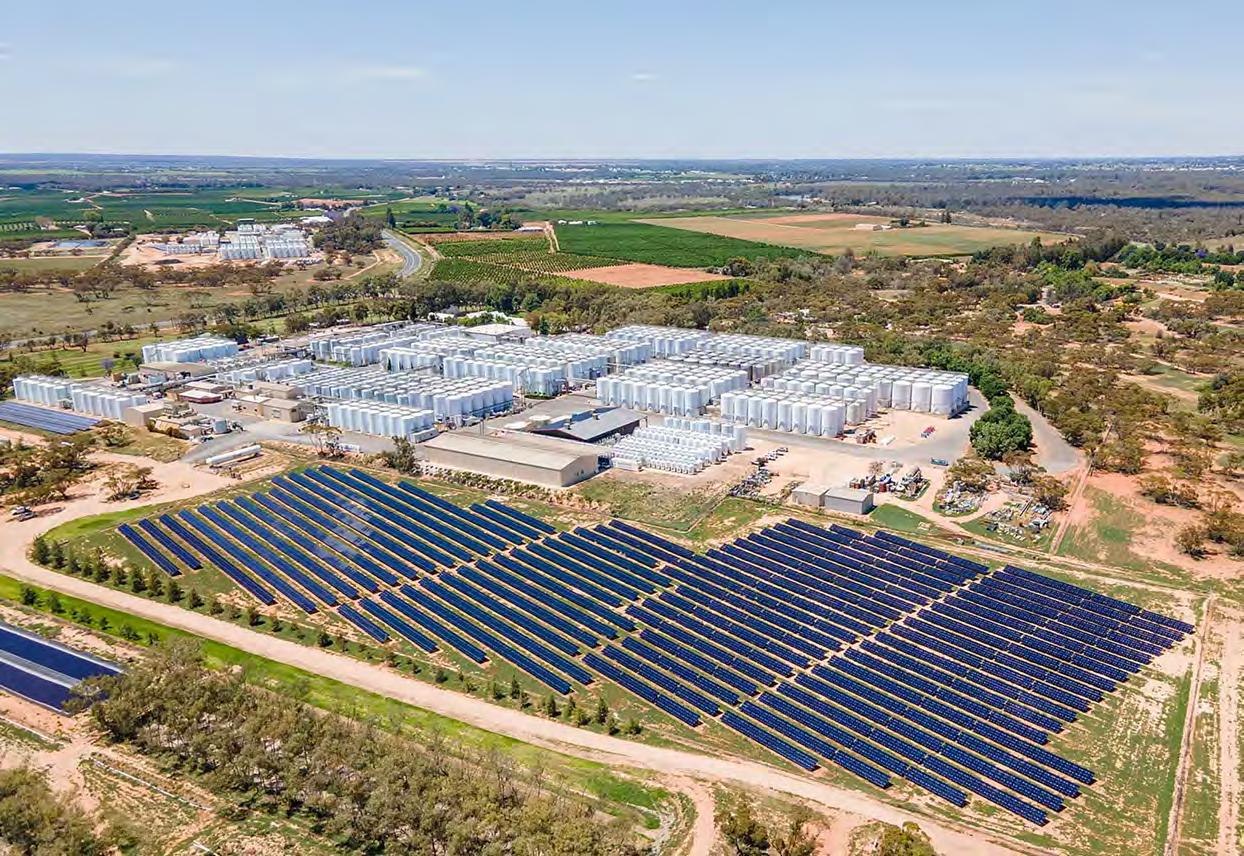
As a B Corp, we join a movement of businesses committed to transforming the global economy to benefit all people, communities and the planet. We’re in business to make good wine that is truly good.”
- Tom Dusseldorp, Australian Vintage
All 2400 hectares of leased and owned vineyards certified by Sustainable Winegrowing Australia, featuring regenerative viticulture practices that support water, soil and biodiversity.
Complete transition to 100% renewable electricity across all sites this year
Its Buronga Hill Winery, home to one of Australia’s largest privately owned solar farms with 14,000 panels generating 2M+ kW a year.
Net Zero 2040 target, with ESG-guided sustainability roadmap
Responsible enjoyment partnerships with
DrinksWise (Australia) and Community Alcohol Partnerships (CAP)(UK)
Continued innovation in the no and low alcohol category and spirits categories to offer choice
Rewarding employee benefits program (26 weeks paid leave for primary carers, loyalty leave, work from anywhere, paid volunteer days, sabbaticals, birthday leave)
Inclusive achievement-based team culture recognising increased female representation across the company, including leadership.
81% of packaging recyclable, with 100% target by 2025
drinks trade 59
NEW RELEASES
SPIRITS
Act of Treason
Agave Spirit
Unlike other spirits in which production can easily be increased to meet demand, agave spirits, and especially the appellation-limited tequila, is constrained by the multiyear agricultural process required to fully mature blue weber agave plants. This has led to inflated prices and a hesitancy for brands and distributors to pursue expansion in markets other than the currently dominant US, which accounts for over 60% of total tequila consumption.

As a result, many are touting the growth of other agave and agave-adjacent categories to fill potential market gaps. Top Shelf International’s new Australian agave spirit Act of Treason is a clear proof of the viability of this idea. Its first release, the First Harvest Blanco, sold out within 24 hours of being on sale.
“Act of Treason symbolises the pioneering spirit of a project that will create a new region of agave spirit, said Trent Fraser, CEO.
“We’re approaching this as an opportunity to create something new and expand the horizons of a category that has been geographically limited for centuries.”
Top Shelf International have advised customers that more spirit will wbe available soon.
Archie Rose Heritage Red Gum Cask Single Malt Whisky
Archie Rose Distilling Co.’s eleventh limited edition release, the Red Gum Cask Single Malt Whisky celebrates the dynamic nature of Australia’s whisky industry, both paying homage to a long-standing family history and championing the innovation for which
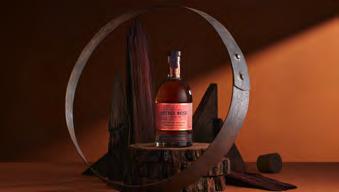
Australian whisky is renowned. The red gum timber casks are believed to originate from the 1930s and were previously used over numerous decades for the maturation of apera fortified wine.
“I have a clear memory of my dad passing on stories he heard about fortified wine barrels being made from native eucalyptus timbers in the 1930s,” said Archie Rose Master Distiller, Dave Withers.
“Many years later, I heard from one of our coopers about a small parcel of casks that had an oddly red colour to the timber. I called my dad right away and told him what I had discovered”.
The limited edition release was made by further ageing a base of Archie Rose’s original Single Malt Whisky in the rare casks, resulting in a single malt brimming with distinctive regional character and charisma. Expect a nose of sun-dried raisins, bush-honey, apricots, eucalypt, sandalwood, and hazelnut butter, followed by flavours of bush-honey, incense, and rich malts.
Only 3,950 bottles were produced.
LARK limited edition whiskies
Lark Distilling Co has released two new limited edition whiskies over the past few months: the the LARK x The Baxter Inn Single Malt and the LARK Dragon Release Single Malt Whisky.
The LARK x The Baxter Inn collaboration is the latest release in its ongoing Whisky Bar Series. The eight release in the series, the collaboration saw the team from The Baxter Inn visit the Tasmaniam distillery to help craft the whisky that best represented the Sydney venue.
The team ended up settling on a single Seppeltsfield Tawny oak cask, which they then triple-finished with the three pillars of Baxter Inn’s identity.
“This single cask, matured in Seppeltsfield Tawny Oak cask was given a triple finish, brown ale to represent the classic Sydney knockoff, super Tuscan red wine as a nod to The Baxter Inn’s Italian ties and paxarette, an ode to the back bar, and the classic bottlings of Scotch that it holds,” said Chris Thomson, LARK Master Distiller.

The resultant whisky features a nose laden with fortified-induced fruit cake and spice, balanced against golden syrup and fresh forest foliage. Expect a weighty palate that exudes sultanas, blackberries, figs, and cherry, all leading into a malty finish of chocolate and coffee with just a hint of red wine and dark fruit.
Only 220 bottles were produced of this rare dram.
The Dragon Release is the Tasmanian producer’s first ever Lunar New Year limited edition. Drawing inspiration from the Classic Cask, it was first aged in 100% first-fill sherry and port casks prior to being finished in Seppeltsfield tawny casks.
“This special single malt whisky has been distilled with the intention of producing a rich and confident palate structure, just like the dragon it represents.” said Master Distiller Chris Thomson.
Expect a rich nose of toffee apple, custard, citrus and oak, followed bu a fuller palate of stewed fruit and plum pudding. Only 4,488 bottles were released.
AWIW International Women’s Day
charity gin
The ultimate International Women’s day gift and drink, the Australian Women in
New Releases
60 drinks trade

Wine’s Hear Me Roar gin is the only gin in the world where all profits go to help women to flourish and succeed in their chosen wine industry professions.
Its recipe was chosen by leading Australian female distillers, who were asked to submit ingredients and recipes they wanted to see included. Southwood Vineyards’ Tracy Taylor submitted the winning combination of blackcurrant leaf, native finger lime and Tasmanian pepperberry.
The current batch was released shortly prior to Christmas and is the second edition of the Hear Me Roar gin, following its successful 2022 release and the 2019 release of the Hear Me Roar Shiraz. 100% of its profits are reinvested into the AWIW.
The Macallan release third iteration of Harmony Collection
The Macallan have released the third iteration of The Harmony Collection made in collaboration with designers Stella and Mary McCartney. The collection is composed of two whiskies, the Amber Meadow and the Green Meadow, both of which were inspired by the sisters’ childhood spent in the Scottish countryside.
To celebrate the launch, The Macallan have announced a pop-up activation in Sydney between Thursday 7 March and Sunday 10 March. The event will take guests on an immersive journey through topics as diverse as The Macallan’s Scottish heritage, how to complete cocktails using the ‘garnish garden,’ and, of course, a holistic exploration of the new Harmony III limitededition releases.
WINE
Rewild bagnums offer affordable eco-conscious option
Duxton Vineyards’ Rewild wine brand has launched a new eco-conscious bagnum format as part of an ongoing commitment to reducing its environmental footprint.
The range is hoping to capitalise on the growing demand for affordable ecoconscious products and comes at a time of changing consumer attitudes towards traditional viticultural and marketing practices.
“The consumer mindset when it comes to wine packaging is changing, with ecoconscious wine drinkers now appreciating that a bagnum format offers many benefits,” said Tony Allen, Senior Winemaker at Rewild.
“With the packaging being at least 90% lighter than glass – and available at an affordable price point for 1.5 litres – the Rewild bagnum is perfect for outdoor group events or gatherings or for those looking for a delicious yet affordable option.”
Included in the new bagnum range is its Chardonnay, Sauvignon Blanc and Shiraz, all retailing at $17.99 for 1.5L. The rest of the Rewild range has an RRP of $9.99 per 750mL bottle, meaning the bagnums also offer better value to customers.

Penfolds new Champagne Thiénot
Penfolds have announced a new Champagne in collaboration with Champagne Thiénot. The Champagne Cuvée Brut will retail at $79, and marks a continuation of the partnership between Penfolds chief winemaker Peter Gago and Champagne
Thiénot’s Chef de Cave Nicolas Uriel.
The two producers first released wine together at The Ritz Paris in 2019 with the inaugural global release of three 2012 vintage Champagnes.
“Penfolds is proud to be in the Bordeaux Hall at Vinexpo Paris this week. What better way to kick off our 180th anniversary celebrations than with the introduction of the Champagne Cuvée Brut, made in collaboration with our friends at Champagne Thiénot and the expansion of our distribution with La Place de Bordeaux,” said Tom King, Penfolds’ Managing Director.

Aces
& Arrows range encourages winemakers to push boundaries
Ace & Arrows, the latest brand to emerge from Pernod Ricard’s innovative wine studio, was founded on the basis of granting four winemakers the task of crafting a wine in a style of their choosing, using their favourite variety.
“We gave our winemaking team the opportunity to have extra creative input, play and have fun when it comes to their craft. No idea was to be left unturned, and that’s how Aces & Arrows was born,” said Pernod Ricard Chief Winemaker Dan Swincer.
The four-wine release includes a 2022 Riverland Vermentino, 2020 Adelaide Hills Grüner Veltliner, 2022 Central Otago Pinot Noir and 2019 Barossa Valley Grenache. Each wine will sell at an RRP of $30.
“When you select a bottle of Aces & Arrows, you can be sure that every drop contains the creativity, passion, and spirit of the craftsman who made it.”
drinks trade 61
Penfolds releases first limitededition Grange
Penfolds have announced the first ever design takeover of its flagship wine, the Grange. The collaboration project features Japanese fashion designer and creative director NIGO and draws direct inspiration from his first visit to Penfolds Magill Estate Winery in 2022.
1,500 Penfolds Grange by NIGO limitedreleases have been produced in 750mL bottles along with 150 magnums. The collaboration involves a reimagination of the Grange’s packaging, with each bottle being presented in an individually numbered gift box along with a bandana, bottle neck tag and authenticity certificate.
The limited-edition Grange marks NIGO’s second collaboration with Penfolds following on from the successful global release of One by Penfolds, where apparel items designed by the artist sold out in less than 1.5 hours.
A Glass of® new wine list series with sommelier Shanteh Wale
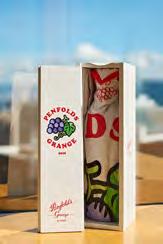
Since launching in 2021, A Glass of® has partnered with leading Australian sommeliers to deliver curated wine collections to customers in its distinctive 200ml pouch format.
Its latest collaboration with Shanteh Wale, head of the sommelier team at Sydney’s Quay restaurant, provides customers with the opportunity to trial five wines for just $47.
Included in the list is La Kooki Verdelho 2023, XO Wine Co Vino Bianco Cortese 2023, blü hen Dry Rosé 2023, Watkins Siblings Series Grenache 2022, and Scion Daylight Red 2023.
“Collaborating with A Glass of® has been an exciting opportunity to share my passion for Australian wines with a broader audience and celebrate some of Australia’s most exciting wine producers,” said Shanteh Wale.
The novel format is also significantly more eco-friendly than traditional wine packaging options. 73% less energy, 94% less water, and 82% less CO2 emissions is required in its production compared to glass.
RTD & BEER
Kirin Hyoketsu releases two new flavours in Australia
Following the successful launch of its signature Lemon flavour in August last year, Japan’s number 1 premix drinks brand Kirin Hyoketsu has announced the release of two new flavours to the Australian market.
Crafted using frozen natural peach/ pineapple juice, vodka, and soda, the Kirin Hyoketsu’s new Peach and Pineapple canned vodka RTDs deliver an intense and slightly sweet flavour balanced by a crisp and clean finish.

Mountain Culture Australian Pale Lager
Winners of the Gabs hottest 100, Mountain Culture Brewing Co have added a new beer to its core range: An Australian Pale Lager.
“Together we set out 18 months ago to brew something special that is deserving of our core range,” said co-founder and head brewer DJ McCready.

The launch marks a significant expansion for the Japanese brand in the Australia market. Australia was the first country outside of Japan to receive their products, shining a light on both the brand’s newfound commitment to increasing its exports and on the relevancy of their products to the Australian consumer.
Curatifa Masterita Box
To celebrate Margarita Month, Curatif has released a limited-edition six-pack of canned Margaritas. Flavours include Salted Blueberry, Pineapple, Cherry, Mango, Mezcalita, and Margarita in Blue.
“We have launched the Masterita box so that cocktails-lovers can enjoy impeccably crafted and convenient cocktails wherever they are celebrating this Margarita Month,” said Matt Sanger, Curatif’s founder.
“Simply shake, pour over ice and add your choice of garnish for a special finishing touch.”
“Highly technical, combining Aussie ingredients, our state-of-the-art brew house and traditional brewing techniques, to deliver the right balance and the most crisp, refreshing lager around. We’re calling it the really good beer for when you just want a beer.”
Brookie’s Free Spirited nonalcoholic range
Cape Byron Distillery have added two new options to the no-alc RTD category through the release of the Brookie’s Free Spirited range.
Included in the collection is the G&T with Pink Grapefruit, designed to honour Brookie’s classic dry G&T, and the Italian aperitivo-inspired Blood Orange Spritz.
“We have crafted our Brookie’s Free Spirited range to deliver a drink experience that is so damn tasty you won’t even know you are not drinking alcohol,” said Eddie Brook, Brookies’ CEO and Co-Founder.
The Free Spirited range makes use of the Byron Bay distillery’s signature rainforest botanical distillate and is low in calories and free from stevia. One of only two Bcorp certified distilleries in Australia, Brookie’s environment-centric focus on creating a healthier world naturally translates to products designed to enable healthier living.
“Now you can experience a world class cocktail experience in a bottle, alcohol free”.
New Releases 62 drinks trade




UPCOMING FEATURES IN WINTER 2024 WHISKY & WHISKEY SPECIAL REPORT FULLSTRENGTH RTD’S HOTTEST 100 BRANDS TO BE PART OF THIS EDITION PLEASE CONTACT ADVERTISING - sales@hipmedia.com.au OR JENNY - jenny@hipmedia.com.au 60,798 INDIVIDUALS average users per month (based on last 12 month) 978,416 PAGEVIEWS per year 807,105 WEB SESSIONS per year DIGITAL COVERAGE www.drinkstrade.com.au Published seasonally, Drinks Trade is Australia’s highest circulating liquor industry publication, filled with engaging content and insightful commentary from leading the industry voices in Australia.
Celebrities
TOAST TO AGAVE SPIRITS
IN THE EVER-EXPANDING LANDSCAPE OF CELEBRITY-OWNED OR ENDORSED ALCOHOL BRANDS, AGAVE SPIRITS HAVE TAKEN THE SPOTLIGHT, ENTICING STARS FROM VARIOUS FIELDS TO VENTURE INTO THE WORLD OF PREMIUM TEQUILAS AND MEZCALS. CELEBRITIES ARE LEAVING THEIR MARK ON THE INDUSTRY WITH THEIR NAME RECOGNITION AND A PASSION FOR THE SPIRITS THEY ENDORSE, OFFERING CONSUMERS A TASTE OF THEIR PERSONAL PREFERENCES.
HERE WE LOOK AT THE TOP-SELLING CELEBRITY-ENDORSED, OR OWNED, TEQUILA AND MEZCAL BRANDS IN TIME FOR THE AUSTRALIAN LAUNCH OF THE FIRST TWO - TEREMANA AND FLECHA AZUL, HITTING AUSTRALIAN SHELVES THIS AUTUMN.
TEREMANA TEQUILA
Dwayne Johnson
Action star Dwayne “The Rock” Johnson entered the tequila market with a bang in 2020, co-founding Teremana Tequila with Ken Austin, Jenna Fagnan, Dany Garcia and the Lopez family from Jalisco, Mexico. The brand has quickly gained popularity for its high-quality Blanco, reposado, and añejo tequilas, promising a taste adventure that aligns with Johnson’s commitment to excellence.
In April last year, The Spirits Business reported that Teremana was “the fastest premium spirits brand to reach 1 million annual case sales” and that critics recognized the tequila brand at no less than 17 global spirits competitions. The celebrity reach is no better highlighted than by looking at Instagram. Teremana,

via Johnson, reaches 801,000, dwarfing Jose Cuervo at 101,000. These are US numbers, but you get the gist. Dwain’ the rock’ Johnson personally has 397 million followers.
Johnson said, “Teremana Añejo is made the right way - with respect and mana. As with all Teremana, being the best in quality and taste is key. Here, there is no exception, and our handcrafted, slow process to create Teremana Añejo means it won’t be easy to find, but once you do, I know you’ll love it. Teremana Añejo is the new gold standard of ultra-premium tequila, and I cannot wait to introduce it to tequila lovers worldwide.”
FLECHA AZUL
Mark Wahlberg
and Mezcal
Tequila
Flecha Azul was co-founded by Mexican professional golfer Abraham Ancer and entrepreneur Aron Marquez before approaching Mark Wahlberg as a principal investor. Wahlberg openly gives all the credit to Ancer and Marquez, “These guys 64 drinks trade
really are the stars, so for me to be able to recognise their talent, their ability and their achievements and then to be able to put them on a platform and celebrate them…. it’s exciting to me”, Wahlberg told The Hollywood Reporter last year.

Wahlberg’s considerable social media reach and star power will also factor into the celebrity autumn ahead; Felcha Azul has 139,000, and Wahlberg boasts a mere 29.2 million followers. Added to that, Wahlberg is filming in Sydney this autumn, so keep your eyes peeled as you might catch him hanging out with the Vanguard team promoting Flecha Azul in bars around Sydney. Fingers crossed.

818 TEQUILA Kendall Jenner
Kendall Jenner has brought her own touch of glamour to the tequila scene with 818 Tequila, released in Australia as a Coles exclusive in September last year. Produced in the heart of tequila-making, Jalisco, the brand pays homage to Jenner’s hometown of Calabasas in Los Angeles, California.
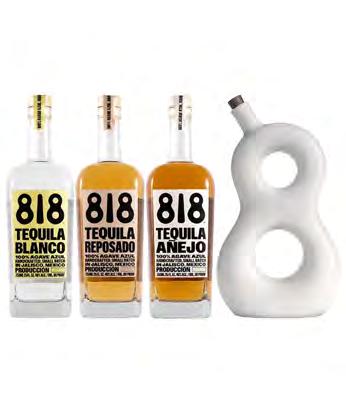

DOS HOMBRES MEZCAL
Bryan Cranston/Aaron Paul
The camaraderie of Bryan Cranston and Aaron Paul, famously known for their roles in “Breaking Bad,” extended beyond the screen when they co-founded Dos Hombres Mezcal in 2019. While producing a limited edition Tobala Mezcal, their Espadin Mezcal stands out with a fruity, floral, oaky flavour profile, complemented by a subtle hint of campfire smoke.

CINCORO TEQUILA Michael Jordan
NBA legend Michael Jordan joined forces with NBA owners Jeanie Buss, Wes Edens, Wyc Grousbeck, and Emilia Fazzalari to create Cincoro Tequila. Renowned for its smooth, easydrinking character, the brand offers a range of expressions, including blanco, reposado, añejo, extra añejo, and gold.


drinks trade 65

Moscow Mule Visits the
Tropics
BY SUBSTITUTING VODKA FOR RUM, THIS TWIST ON THE CLASSIC COCKTAIL RESULTS IN EVEN MORE PERSONALITY, FLAVOUR AND FRESHNESS. IT IS THE PERFECT DRINK FOR THOSE TIMES WHEN YOU WANT TO OFFER GUESTS SOMETHING THAT BOTH STANDS OUT AND TASTE FAMILIAR AT THE SAME TIME.
JAMAICAN MULE COCKTAIL
The Jamaican Mule is a twist of the classic Moscow Mule, incorporating a tropical twist with the true Jamaican spirit, adding excellent flavour depth and providing layers of complexity and freshness.
Glass: Highball glass
Garnish: Lime wedge
Ingredients:
45mls Appleton Estate Signature Blend
120mls Fever-Tree Ginger Beer
1/2 Fresh lime wedge
3 x Dashes of Angostura Bitters
Method: Pour 45ml Appleton Estate Signature Blend into a highball glass. Add 120mls of FeverTree Ginger Beer and juice half a lime into the highball and top with ice. Garnish with 3 x dashes of Angostura Bitters floated on top and a lime wedge.
Last Drinks
66 drinks trade























































































































































